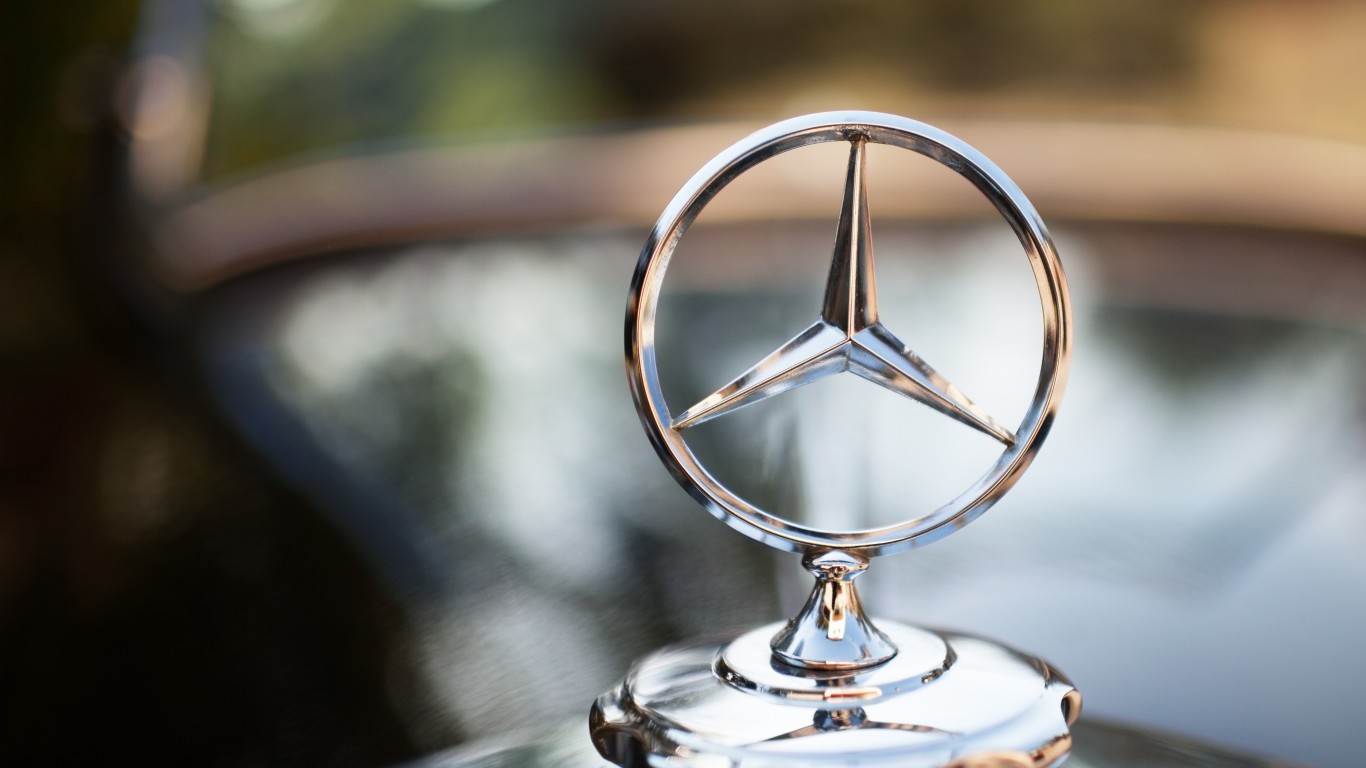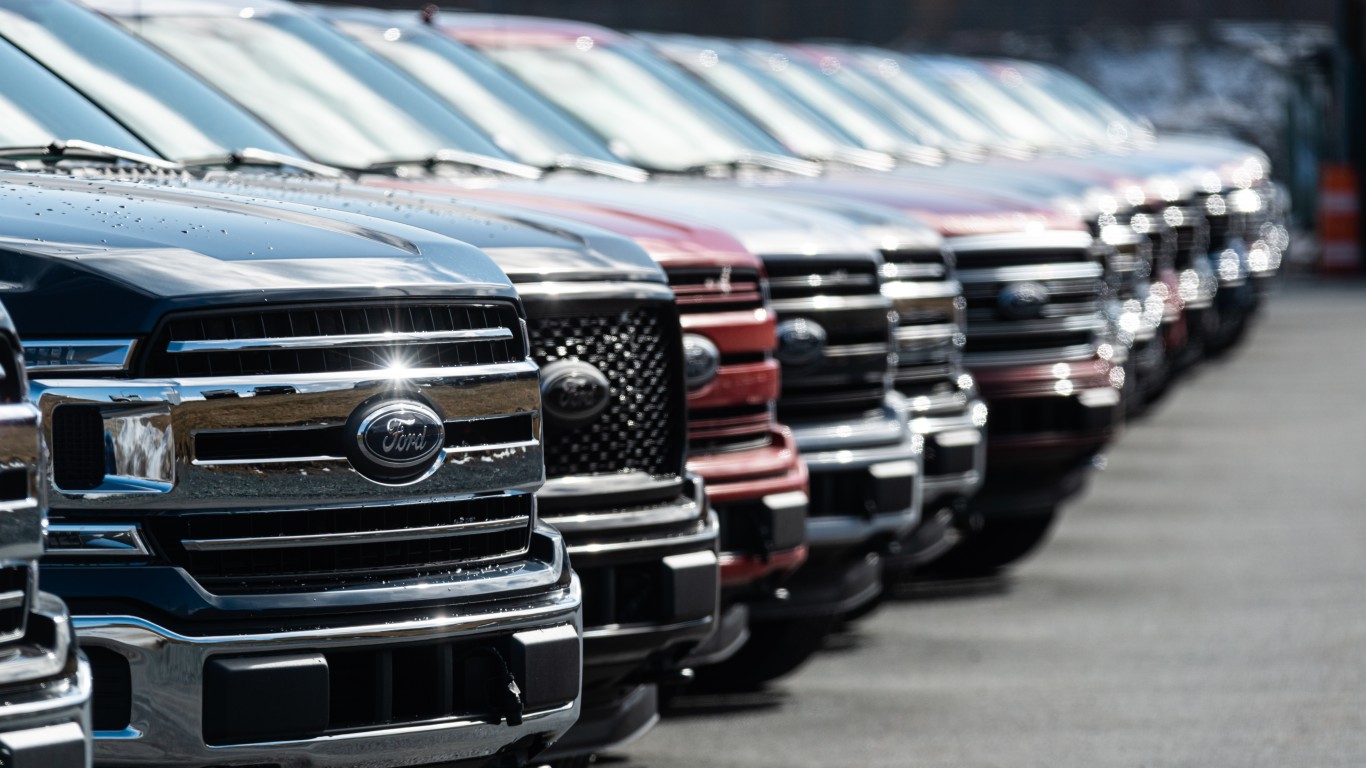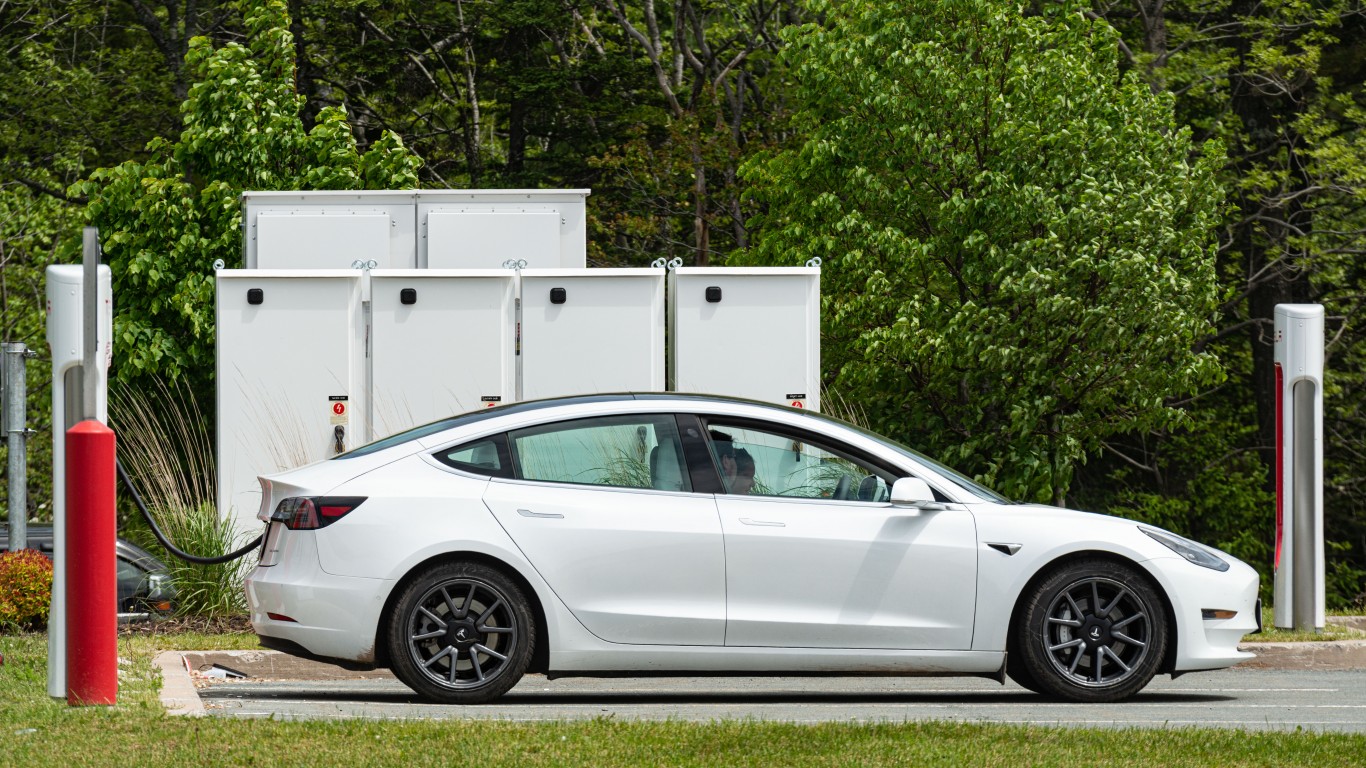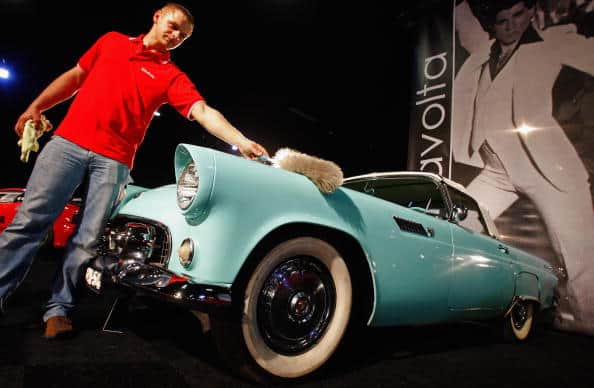
The 1950s were a transformative period for the American automotive industry. Characterized by a shift towards larger, stylish, more powerful cars, the decade saw the rise of iconic designs, incorporating bold fins, chrome accents, and distinctive grilles. Innovations like automatic transmissions and power steering became increasingly popular, with an emphasis on comfort and convenience. The era witnessed the emergence of muscle cars, reflecting a growing fascination with speed and performance, while suburban America embraced station wagons and family-oriented vehicles for their utility and spaciousness. The 1950s automotive trends were characterized by a blend of style, technological advancements, and a shift toward a car-centric culture that continues to influence the industry. Grab your Bobby Sox and Brill Creme and join the 24/7 Wall St. gang as we take a chronological trip down memory lane, re-discovering the 40 coolest cars released in the 1950s!
1950
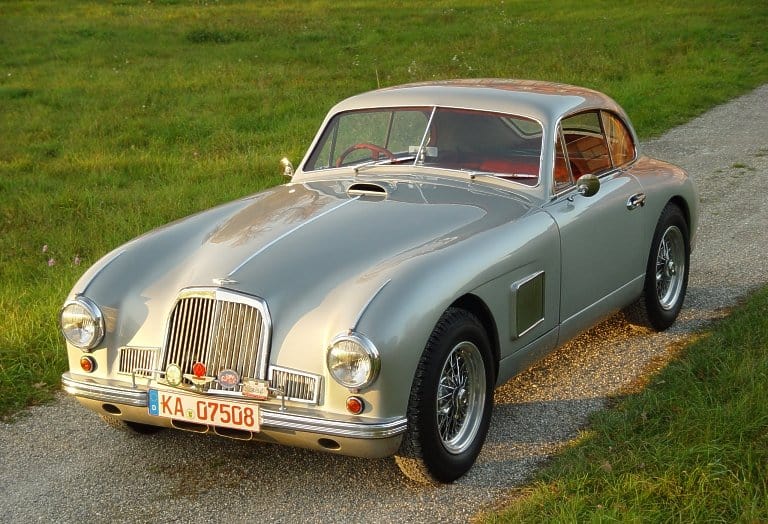
At the dawn of the decade, as the auto industry was adjusting to post-war conditions, the outbreak of the Korean War reestablished the demand for military vehicles, leading manufacturers to prioritize defense-related production over introducing new consumer cars. Also in 1950: Harry Truman was POTUS, U.S. Social Security disability insurance was introduced, and the New York Yankees defeated the Philadelphia Phillies in four games to win the 1950 World Series, their second championship in as many years.
Jowett Jupiter
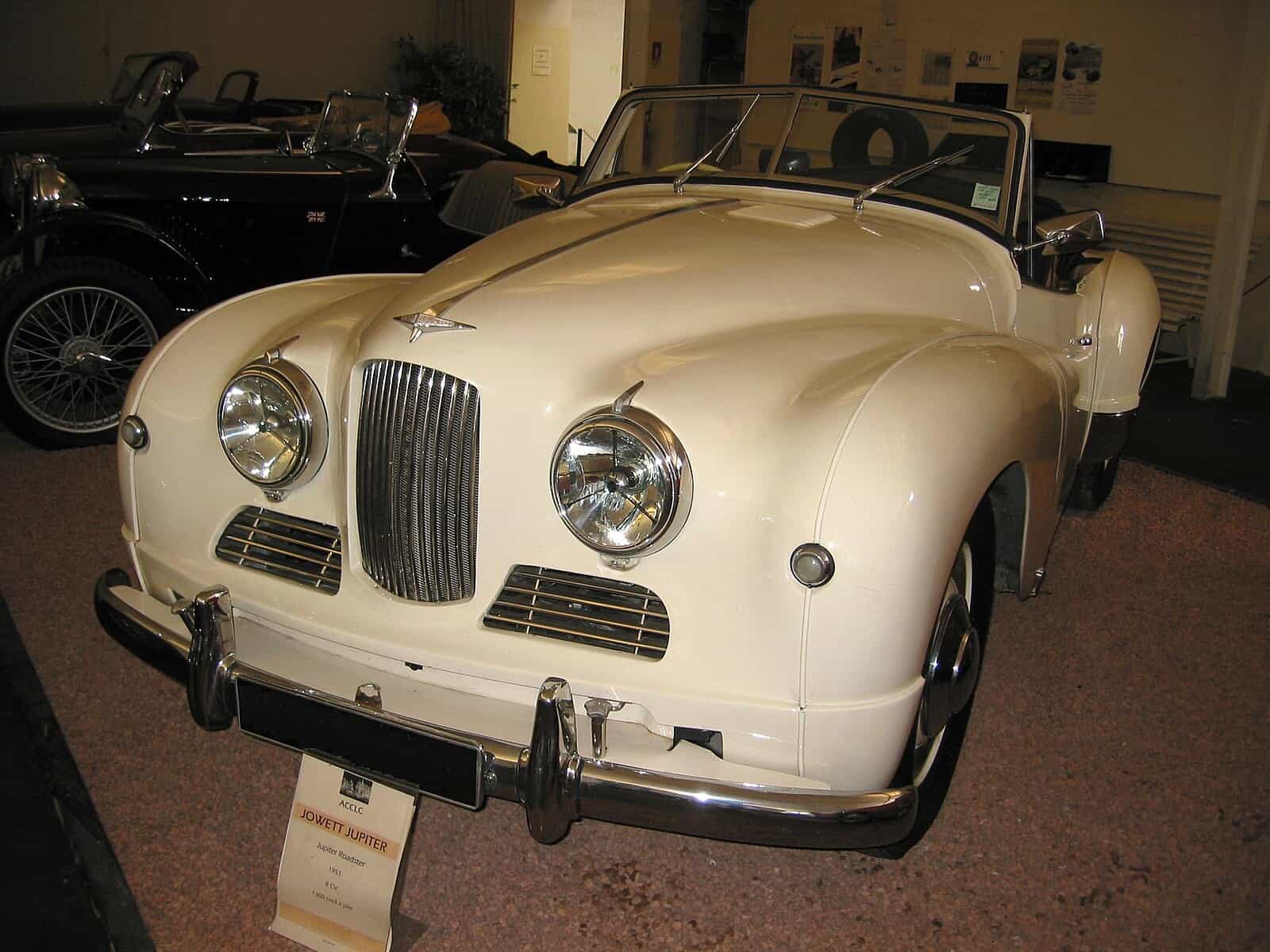
The Jowett Jupiter was a sports car that garnered attention for its advanced engineering and sporty design. The two-passenger, open roadster was powered by a horizontally opposed, water-cooled, 1.5-liter flat-four engine, the Jupiter boasted a lightweight tubular chassis and independent front suspension, contributing to its agile handling. With fewer than 100 units produced between 1950 and 1954, the Jupiter is a prized collectible.
Kaiser-Frazer Henry J
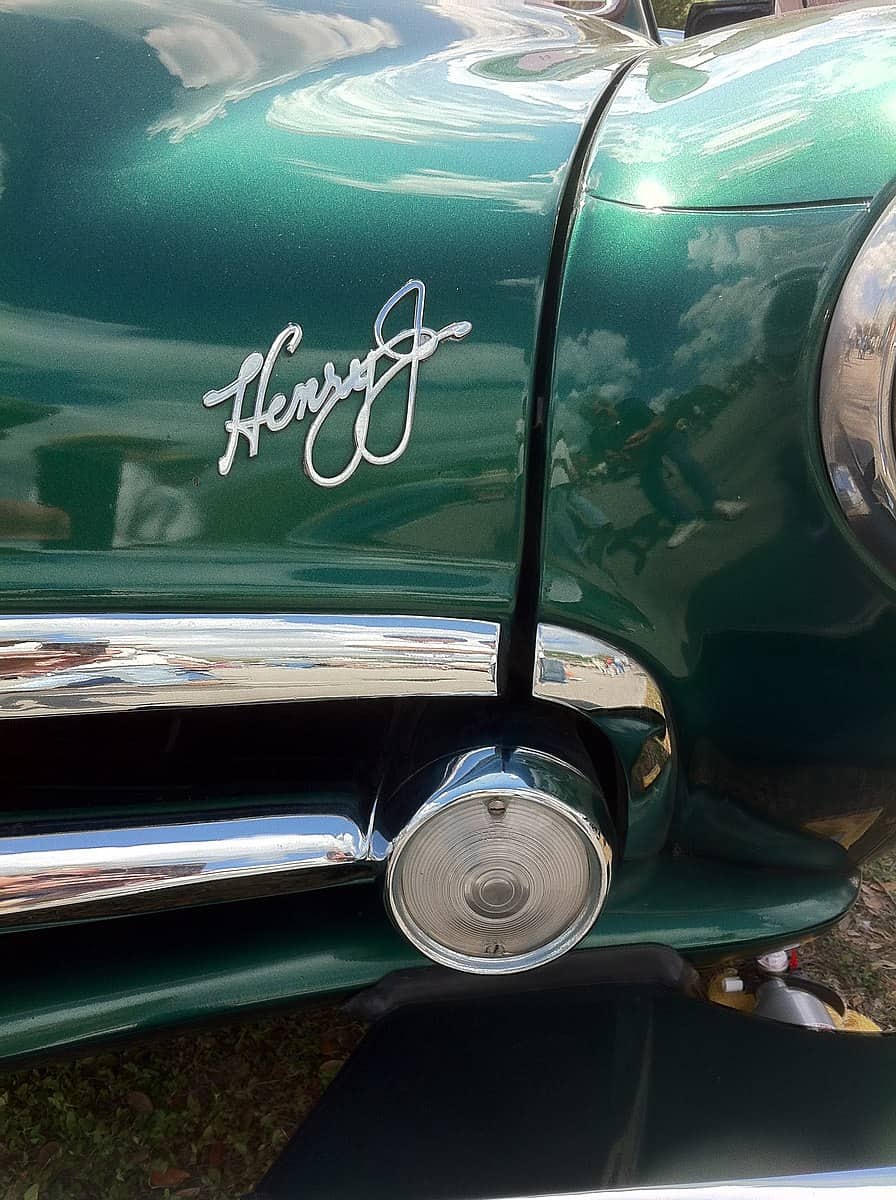
The Kaiser-Frazer Henry J was introduced as an affordable and fuel-efficient compact car. Named after company president Henry J. Kaiser, the car was compact, had simplistic lines, and a minimalistic approach. Although it was initially intended as an economical option, the Henry J faced challenges in the market due to its small size and the growing preference for larger, more powerful cars.
Volkswagon Type 2
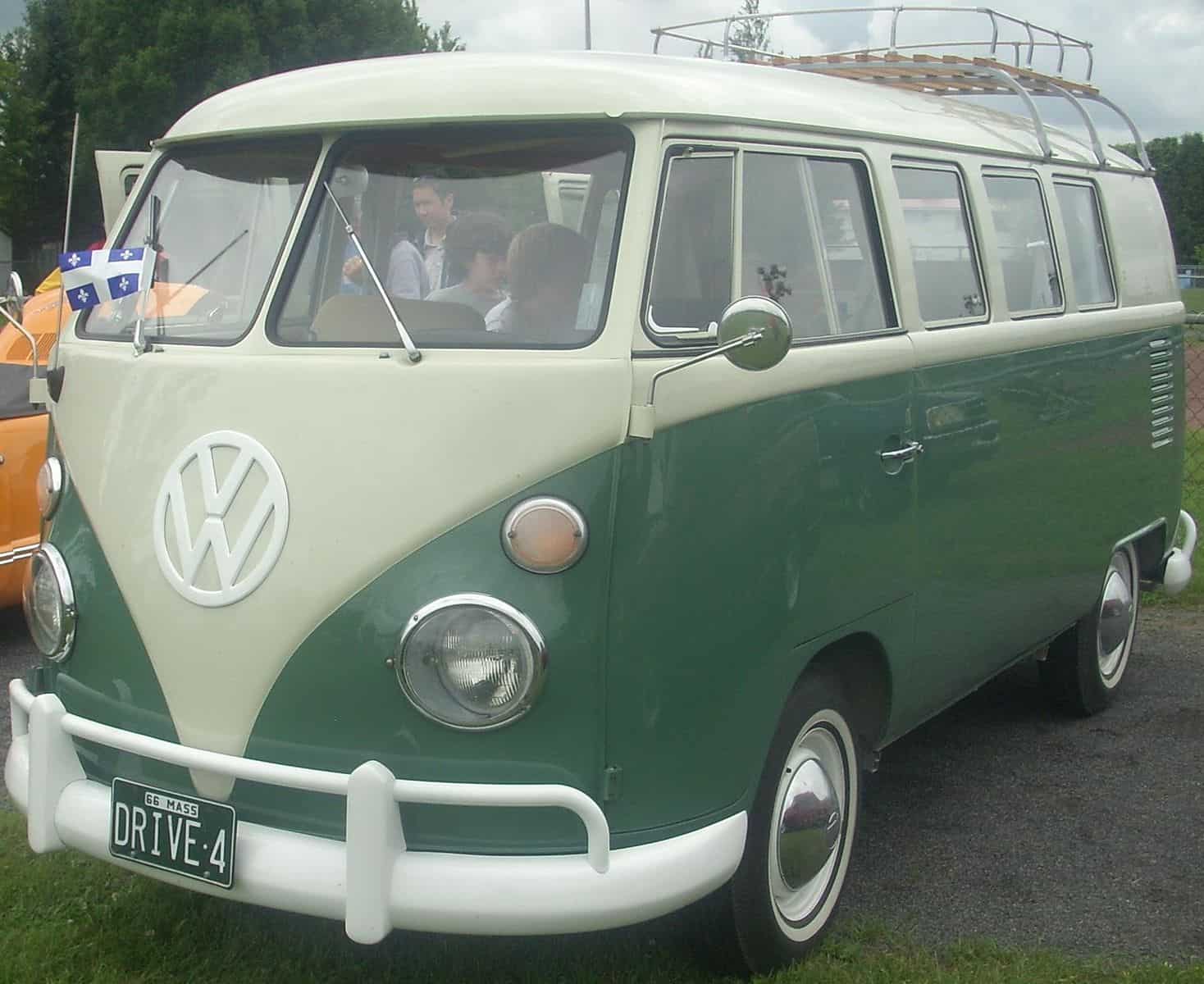
The Volkswagen Type 2 played a pivotal role in shaping the culture of the 20th century. Also called the Kombi, Microbus, or Transporter, the Type 2 featured a boxy style and a rear-engine configuration. Originally designed as a practical and versatile commercial van, the Microbus quickly gained popularity for its adaptability and spacious interior. The Type 2 continues to be embraced by the counterculture as a symbol of freedom and adventure.
1951
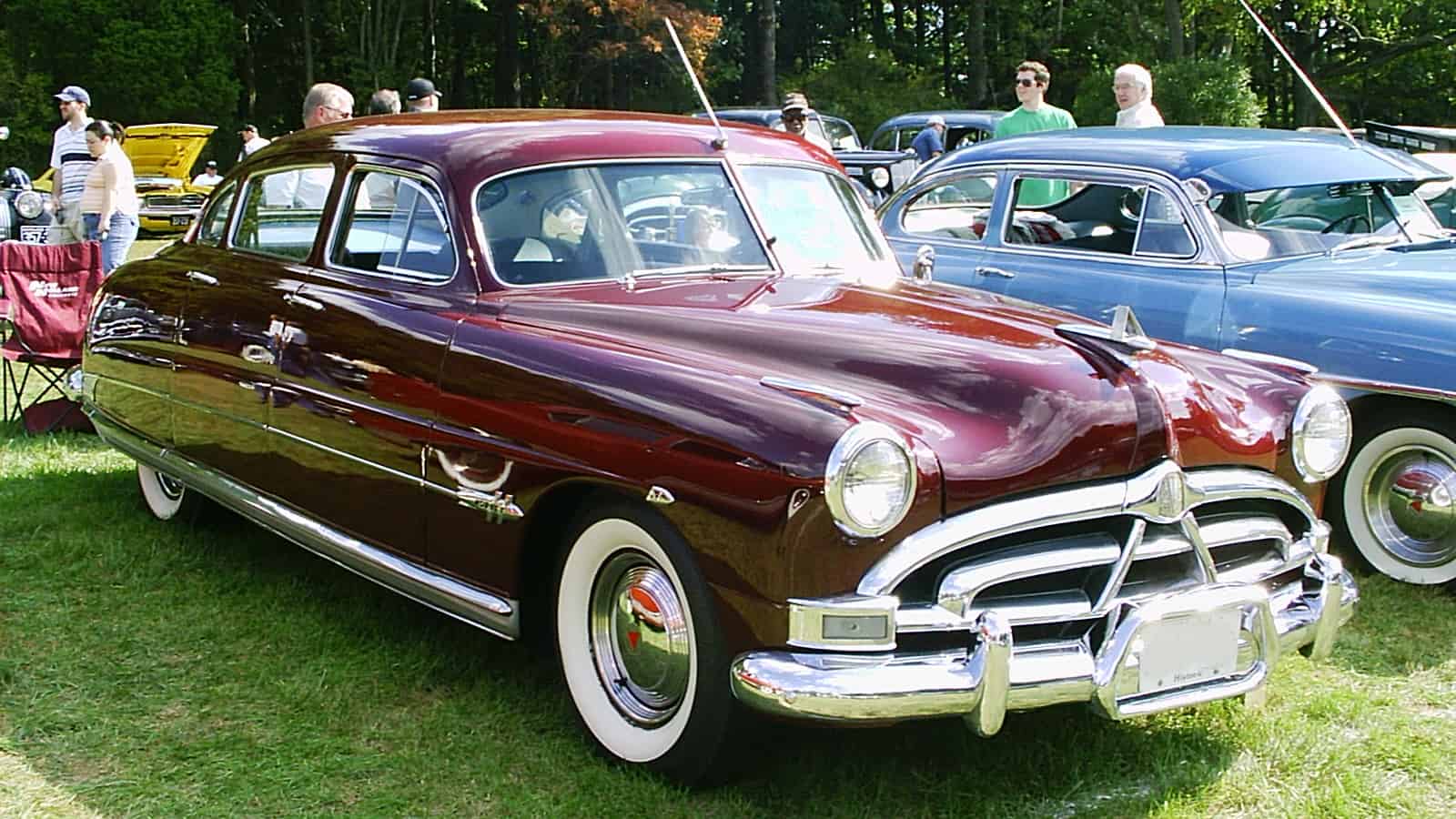
Military conflict continued to dominate the headlines in 1951. The Korean War persisted as the Cold War escalated with the U.S. testing its first hydrogen bomb at Frenchman Flat Nevada. On the lighter side, Vivian Leigh won the Oscar for her portrayal of Blanche Dubois in Tennessee Williams’ A Streetcar Named Desire, and Joe DiMaggio suited up for the Yankees in their third consecutive World Series victory.
Nash Healey
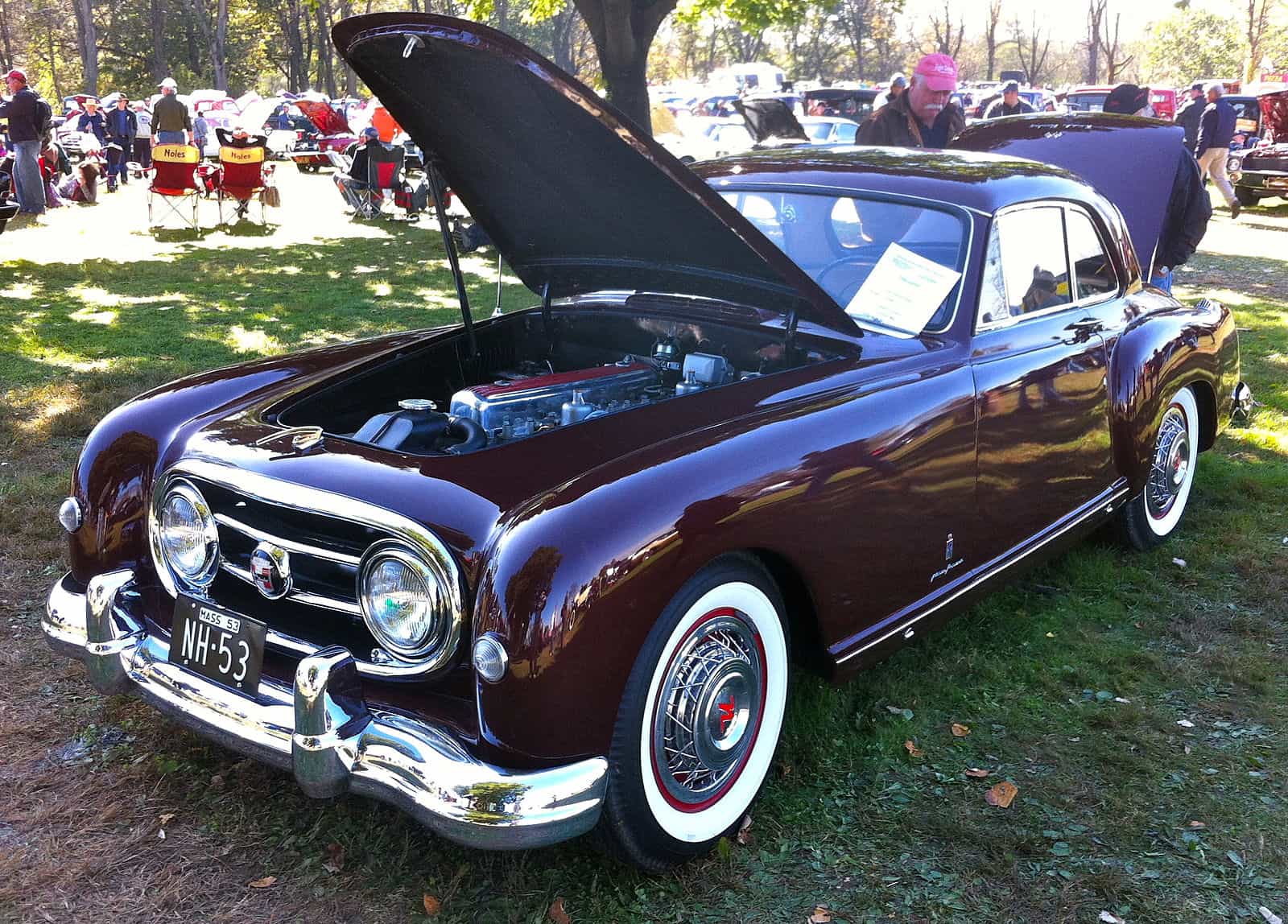
The Nash-Healey represents a notable collaboration between American and British automakers, combining the design prowess of Nash Motors from the U. S. with the engineering excellence of Donald Healey from the United Kingdom. This stylish three-seater boasted a powerful 3.2-liter Nash Ambassador engine coupled with a lightweight British-built chassis. With just over 500 units produced during its run, the 1951 Nash-Healey is a sought-after classic.
Pegaso z-102
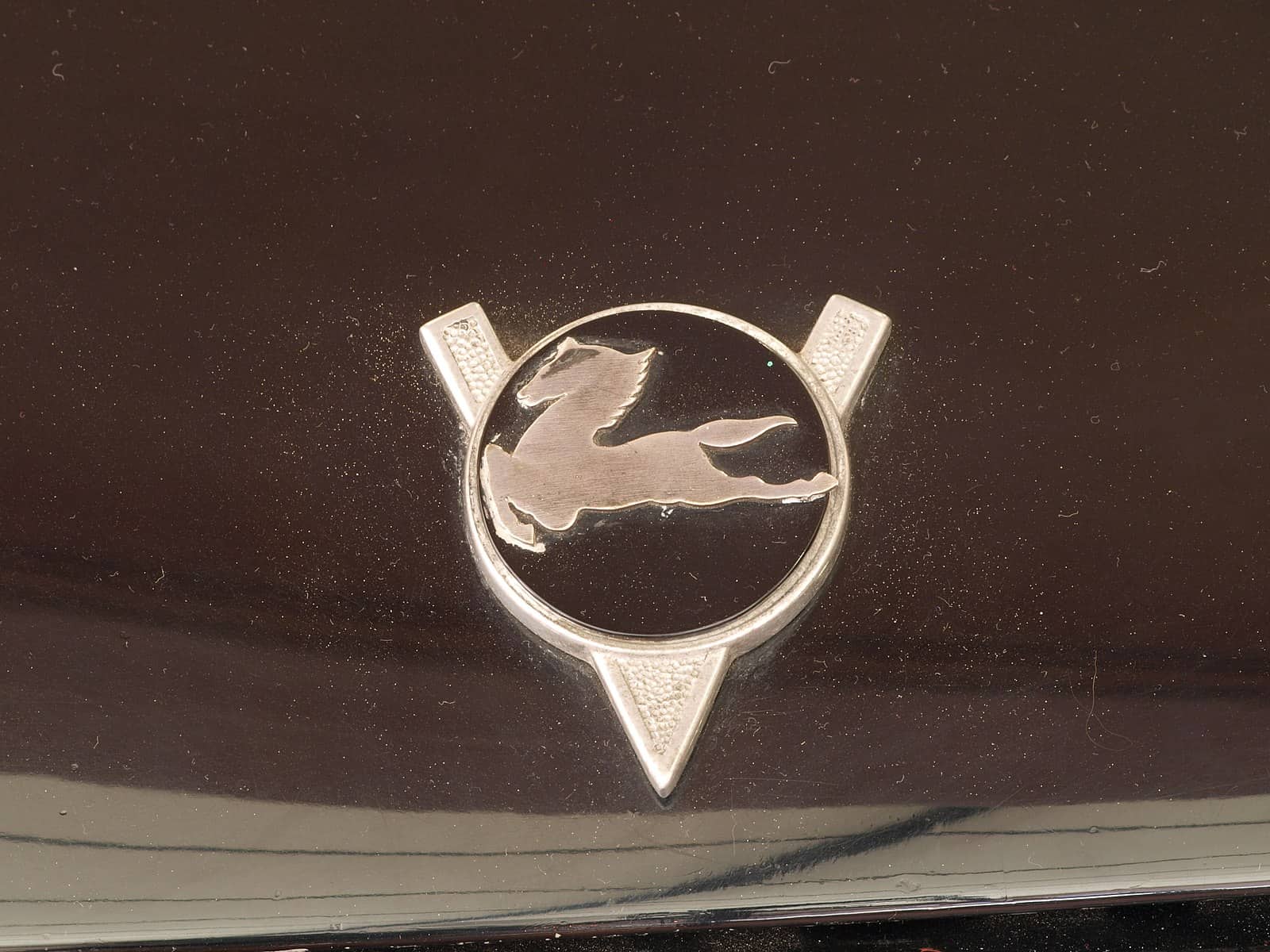
The Pegaso Z-102 is a rare and distinctive luxury sports car that emerged from Spain’s Empresa Nacional de Autocamiones S.A. (Enasa). The Z-102 featured a lightweight aluminum body, while under the hood, roared a powerful 2.8-liter V8 engine. Despite its limited production (84 units were produced between 1951 and 1958), the Z-102 represents Spain’s foray into high-performance luxury cars.
Talbot Baby
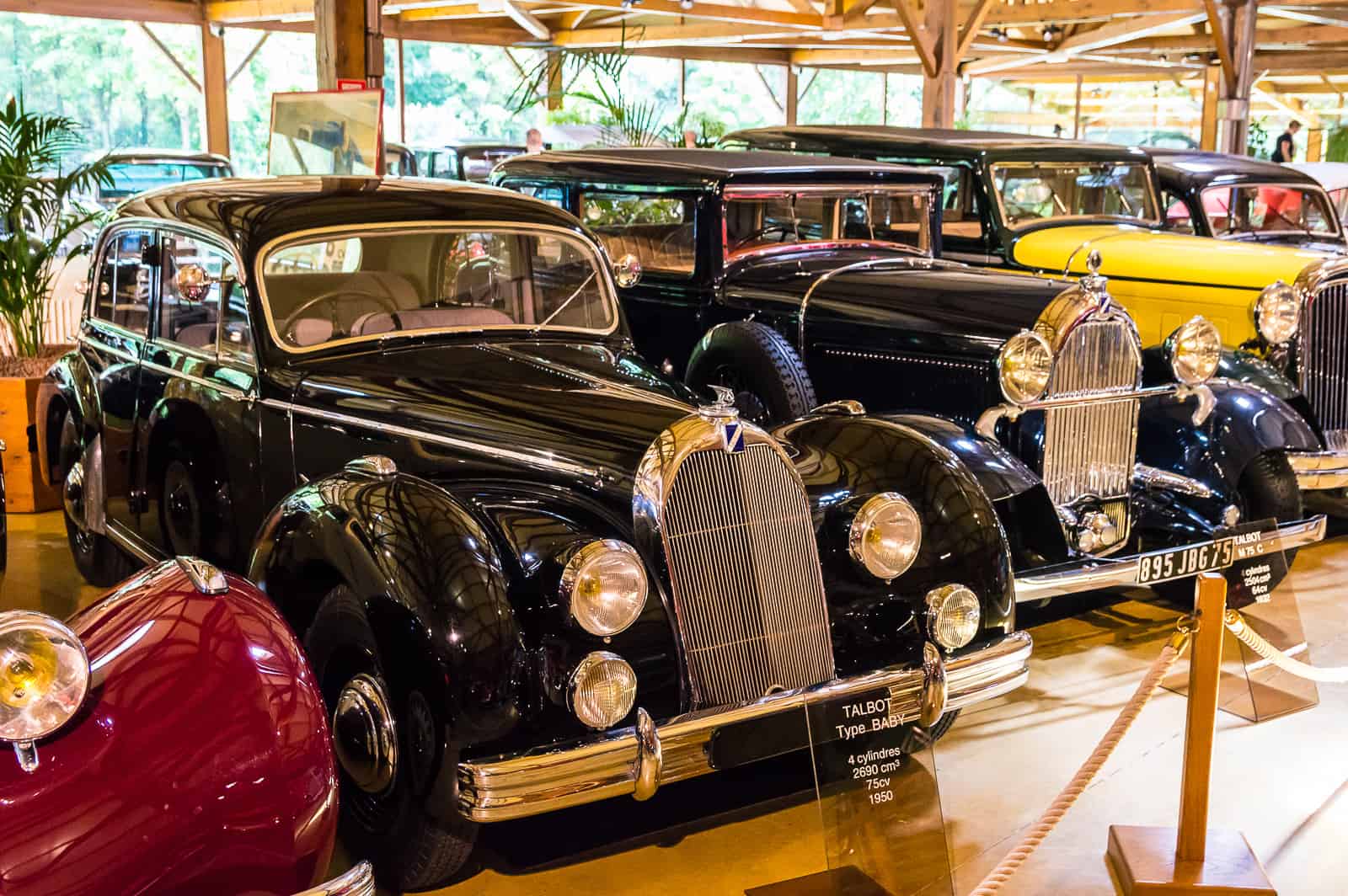
A product of the French automaker Talbot-Lago, the Baby was a compact luxury car, renowned for its stylish design. The Baby featured a streamlined body and intricate detailing, reflecting the post-war era’s transition from utility-focused vehicles to more aesthetically refined automobiles. Under the hood, a four-cylinder engine provided a balance between performance and efficiency. Clarification: Talbot manufactured a Baby model from 1936-1940, that was powered by a 6-cylinder engine.
1952
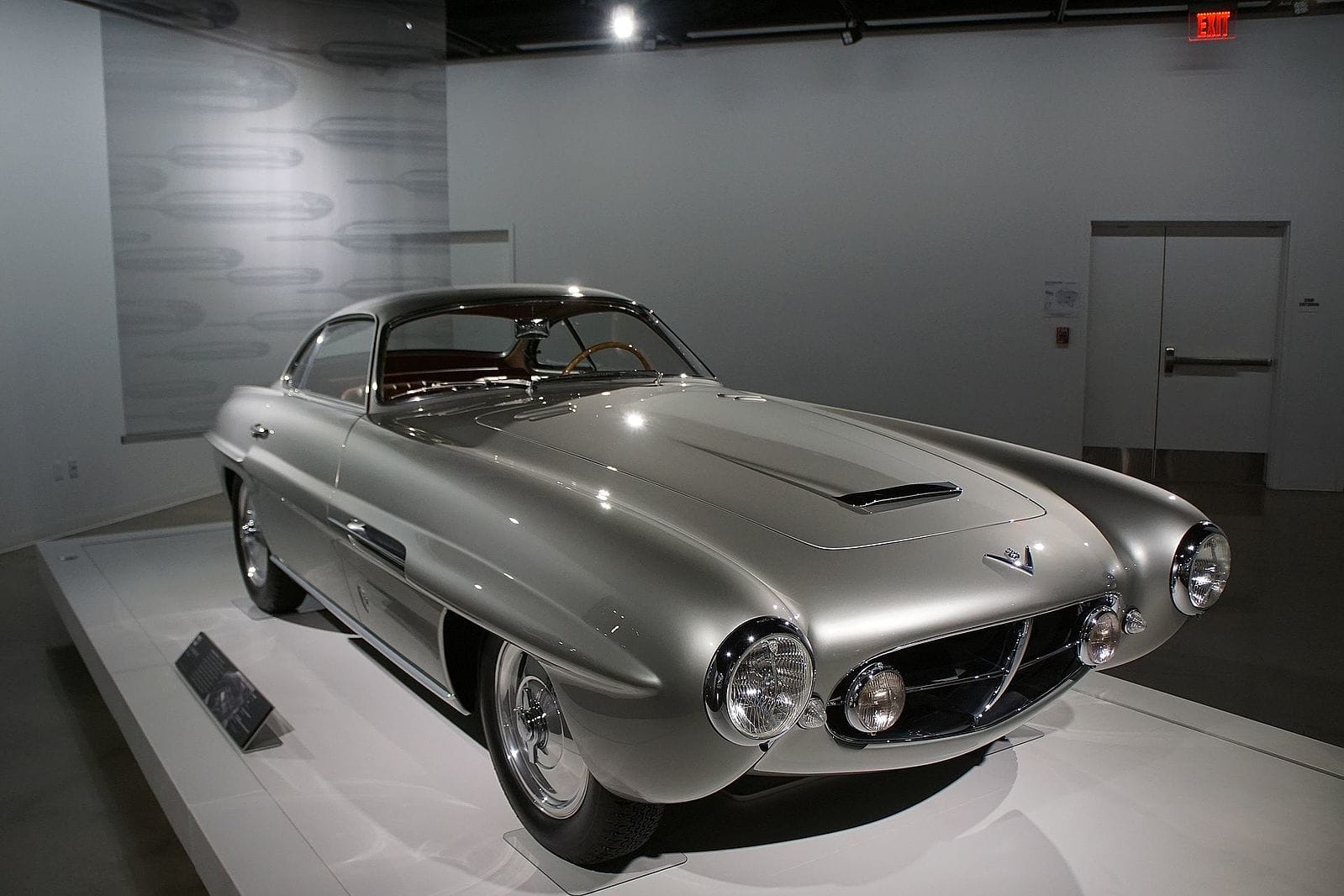
Peace negotiations were ongoing, but the Korean War would rage on for another year. Away from the front lines, Dwight D. Eisenhower defeated Adlai Stevenson in the U.S. presidential election, and Queen Elizabeth II ascended the throne upon the death of her father, King George VI. The Yankees won their 4th consecutive World Series Championship, beating the Dodgers, who were still their crosstown rivals in Brooklyn, in seven games.
Chrysler C-200
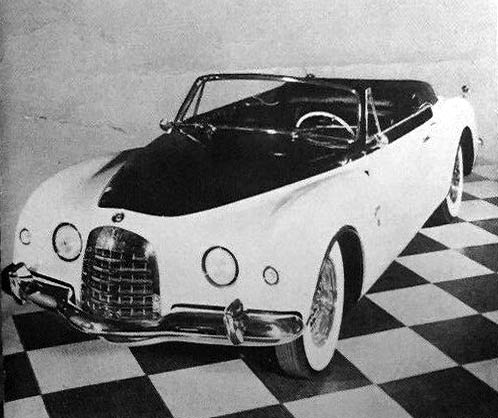
The 1952 Chrysler C-200, manufactured by Carrozzeria Ghia in Turin, Italy, was a collaboration between the American automaker Chrysler and the Italian design house Ghia. The collaboration with Ghia brought a touch of European elegance to the Chrysler brand. A Chrysler V-8 engine powered the lightweight Italian sports car chassis. Though it was never added to the Chrysler lineup, the C-200 remains a symbol of the innovative partnerships that emerged in the post-war era.
DeSoto Firedome
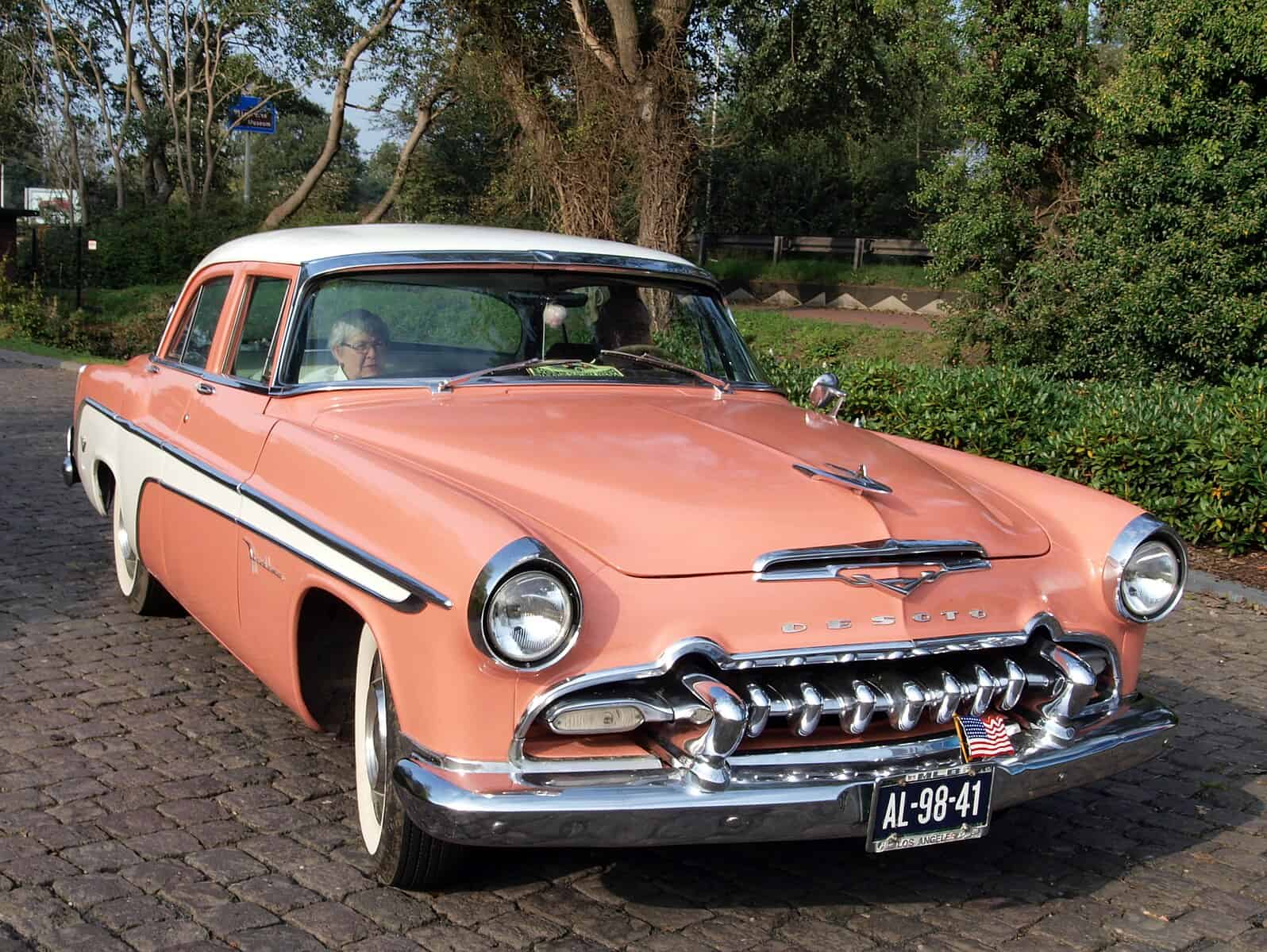
Manufactured by the DeSoto division of the Chrysler Corporation, the Firedome was introduced as part of the brand’s lineup for the 1952 model year. The full-size car featured a powerful Hemi V8 engine, a hallmark of DeSoto’s commitment to performance and innovation. The Firedome’s design embodied the sleek and chrome-laden aesthetic prevalent in the early 1950s, with distinct tailfins and a bold front grille. The Firedome, with its blend of power and eye-catching design, remains a highly collectible car.
Felber Autoroller T 400
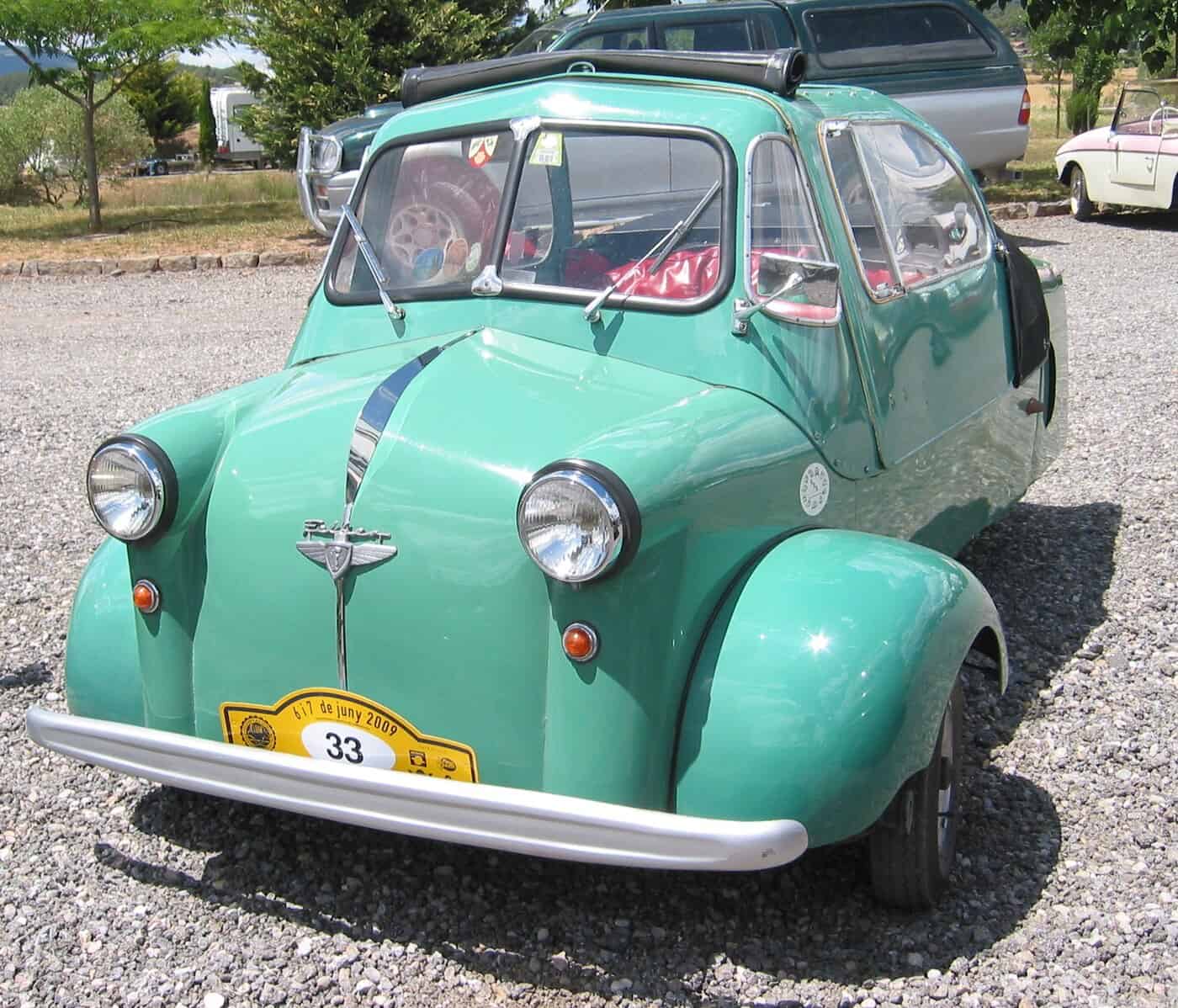
This small vehicle featured a distinctive three-wheeled design with a single rear wheel. The Autoroller T 40o was a two-seater powered by a 400cc engine. Microcars like the Felber Autoroller T 400 were popular in post-war Europe due to their fuel efficiency and affordability. While microcars were the perfect solution for urban commuting, their popularity waned, as larger, more comfortable automobiles gained popularity.
1953
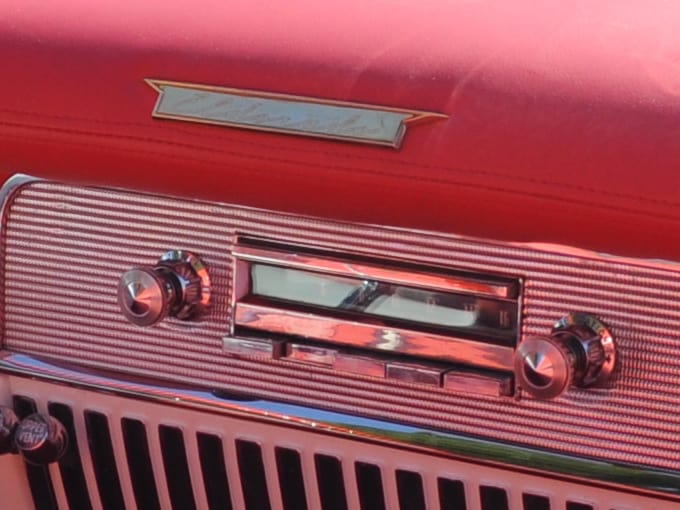
Topping the news in 1953: The Korean War officially ended, Soviet leader Joseph Stalin died, and Queen Elizabeth II had her coronation. The USSR explodes their own hydrogen bomb and Edmund Hilary and Tenzing Norgay summit Mt. Everest. In a repeat performance, The NY Yankees wallop the Brooklyn Dodgers to win their 5th consecutive World Series Championship!
Biscúter
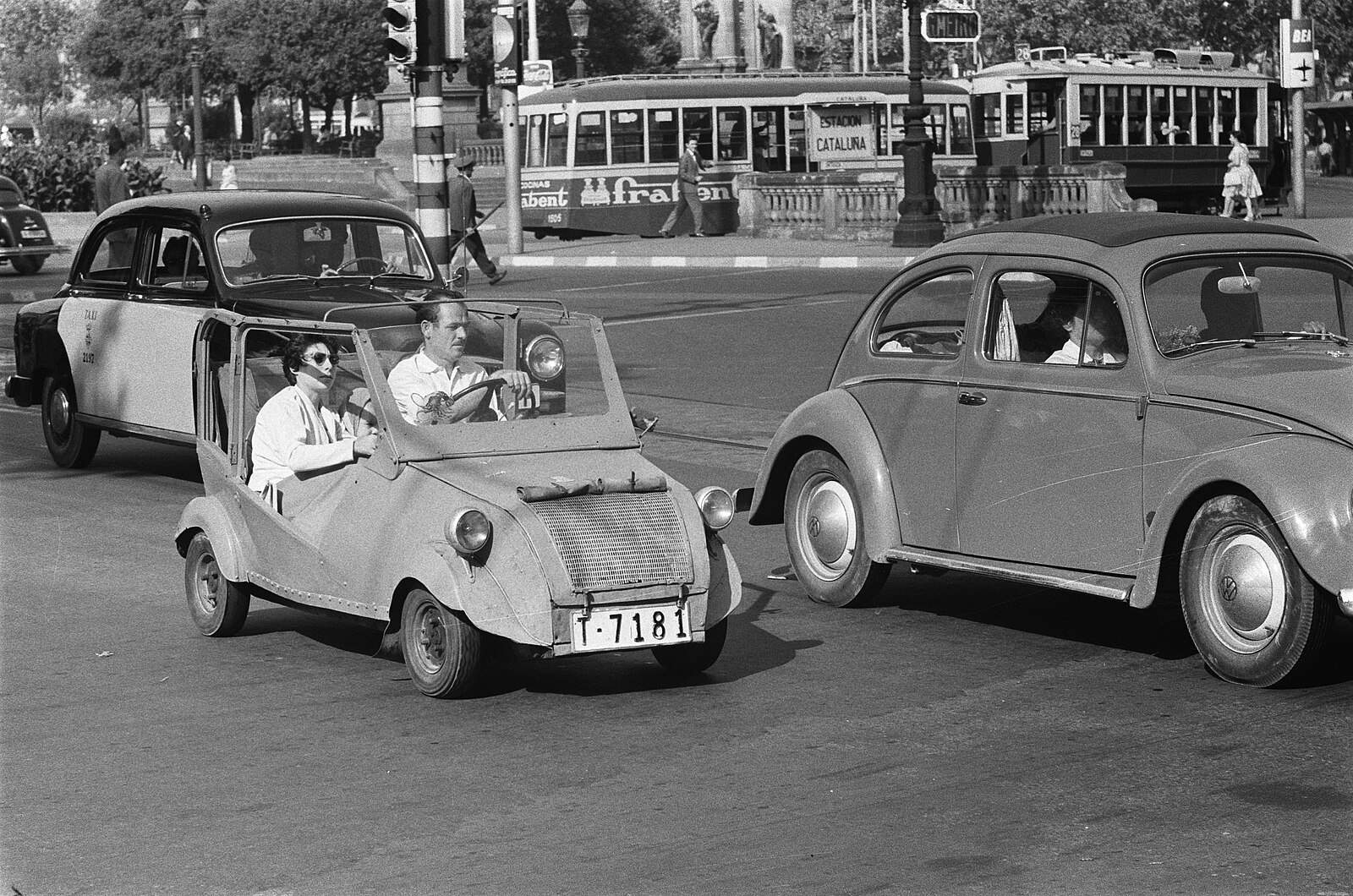
Of the 30 coolest cars released in the 50s, the Biscúter is among the most unique. The Biscúter, produced by the Spanish firm Autonacional, was a microcar that gained popularity in post-war Europe. The Biscúter was an affordable, minimalistic vehicle. It featured a simple tubular frame, fabric body, and a single-cylinder two-stroke engine, not unlike a lawnmower engine. Despite its diminutive size and limited horsepower, the Biscúter gained a reputation for being an economical and practical urban vehicle.
Chevrolet Bel Air
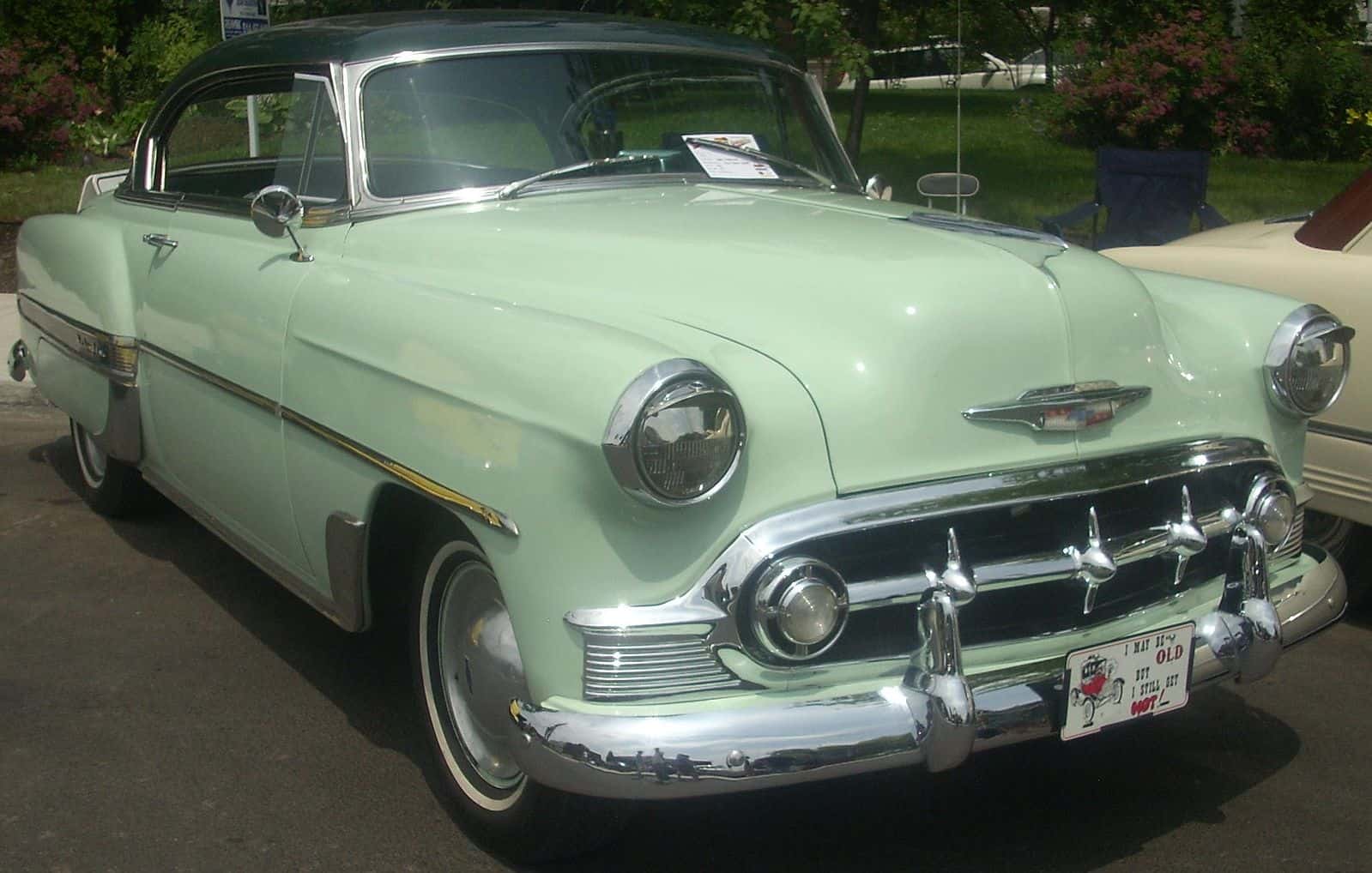
Though the Chevy Bel Air was introduced in 1950 as a 2 door coupe, 1953 ushered in a new Bel Air line. The ’53 Bel Air boasted a sleeker design featuring chrome accents, a distinctive grille, a one-piece curved windshield, and optional two-tone paint schemes. Available with six-cylinder or V8 engine options, along with its spacious interior, contributed to the Bel Air’s widespread popularity.
Chevy Corvette
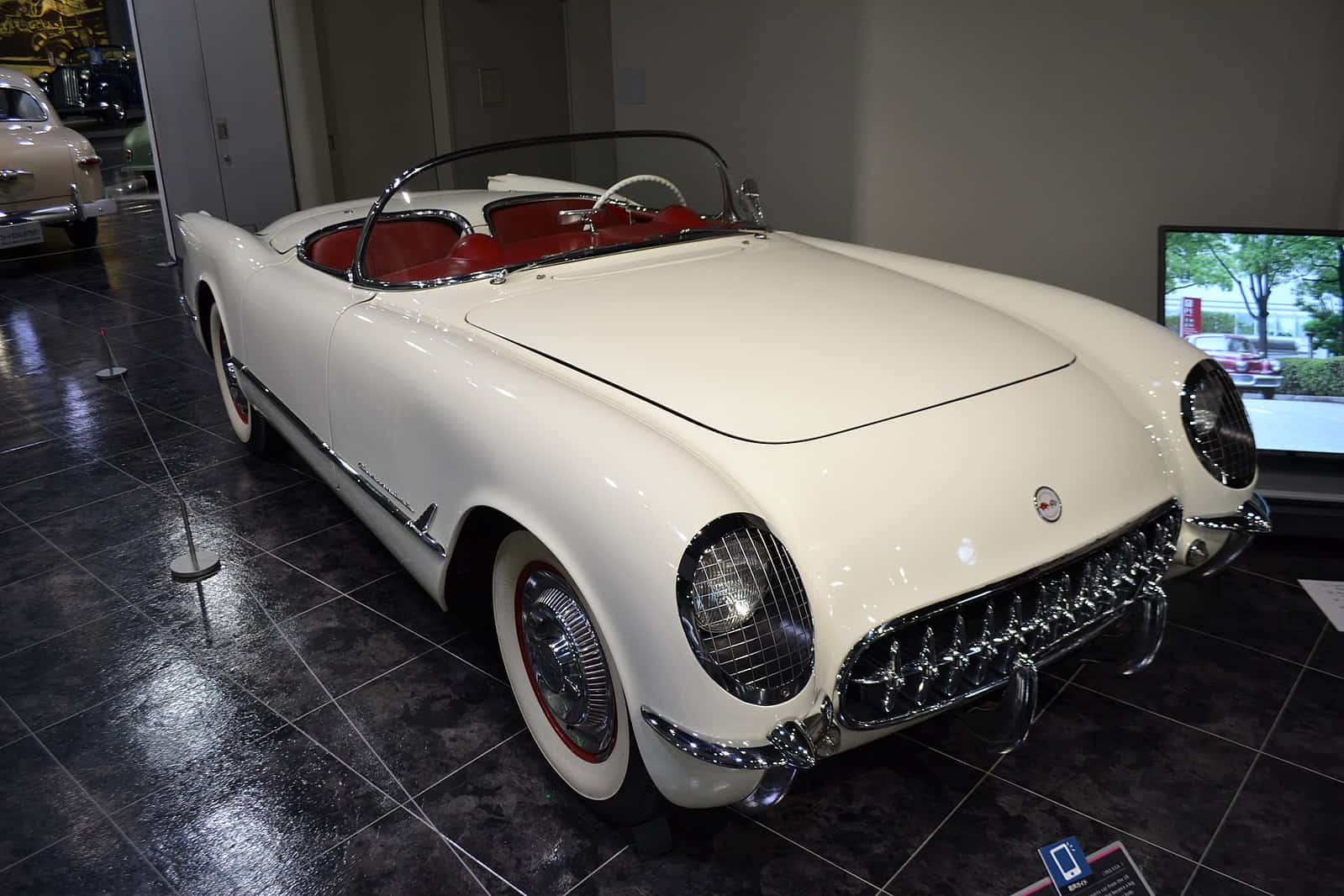
The Year 1953 witnessed the birth of a legend. Introduced as a show car at the GM Motorama the Corvette’s fiberglass body, and sleek design were influenced by European models. A Blue Flame inline-six engine paired with a Powerglide automatic transmission purrs under the hood. Limited to 300 units, this debut model laid the foundation for the Corvette legacy. Combining performance, style, and a sense of adventure, the ’53 Corvette is a highly sought-after classic.
1954

Roger Bannister ran the under-four-minute mile, the first successful kidney transplant was performed, and Brown v. Board of Education declared racial segregation in public schools violated the 14th Amendment. On the Waterfront, starring Marlon Brando, took home the Oscar for Best Picture, and the Yankees DIDN’T win the World Series. The New York Giants beat Cleveland in 4.
Jaguar D-Type
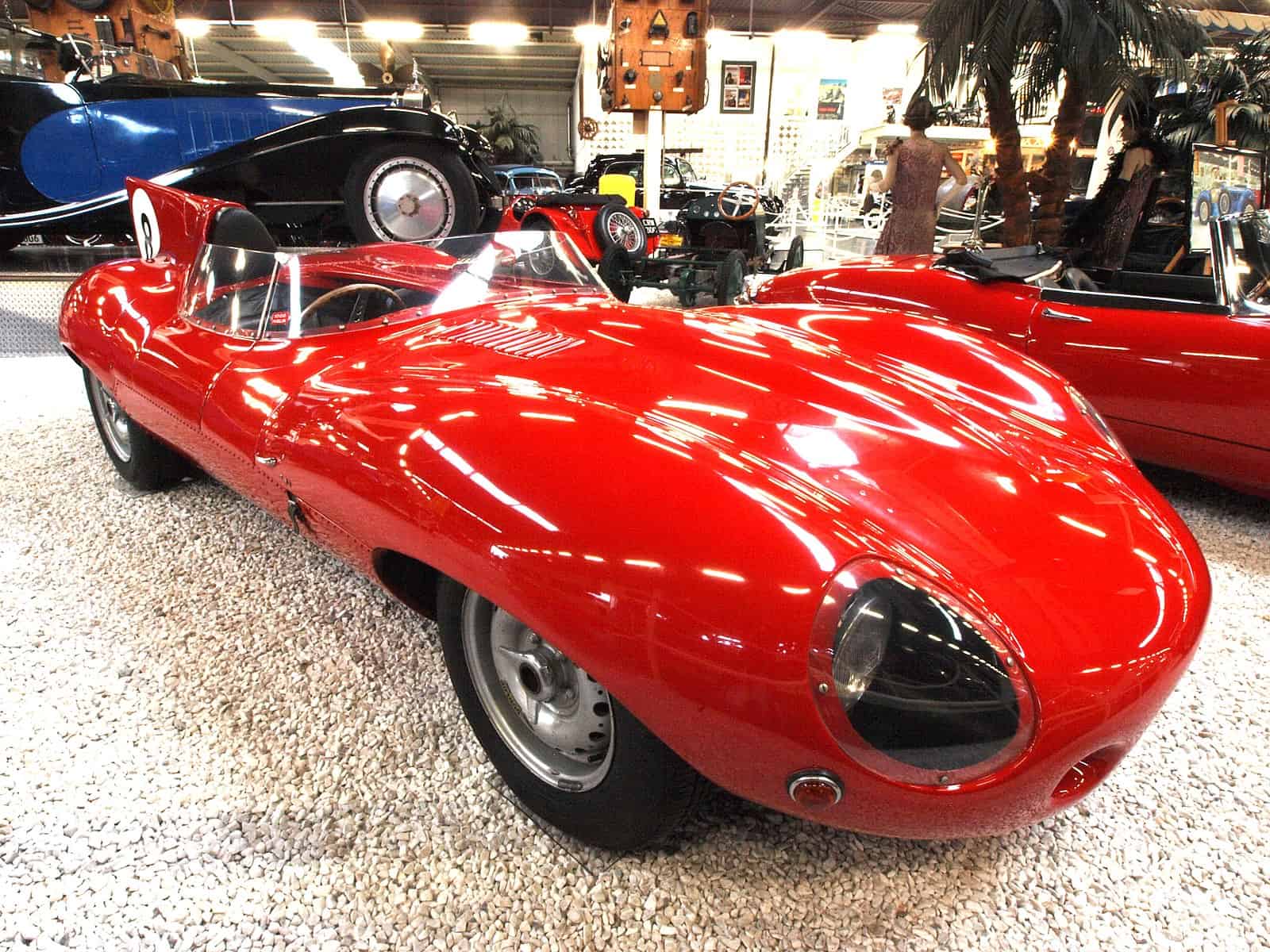
Of the 30 coolest cars released in the 50s, the Jaguar D-Type is definitely among the coolest of the cool. The 1954 Jaguar D-Type rode in on the coattails (tailpipes?) of the success of the C-Type. The D-Type was specifically crafted for endurance racing, with an aerodynamically sleek, curvaceous body. A potent XK inline-six engine and advanced innovations like disc brakes, offering superior stopping power defined the new Jaguar. Its distinctive tail fin and purposeful design contributed to its exceptional performance while making it a style icon.
Kaiser Darrin
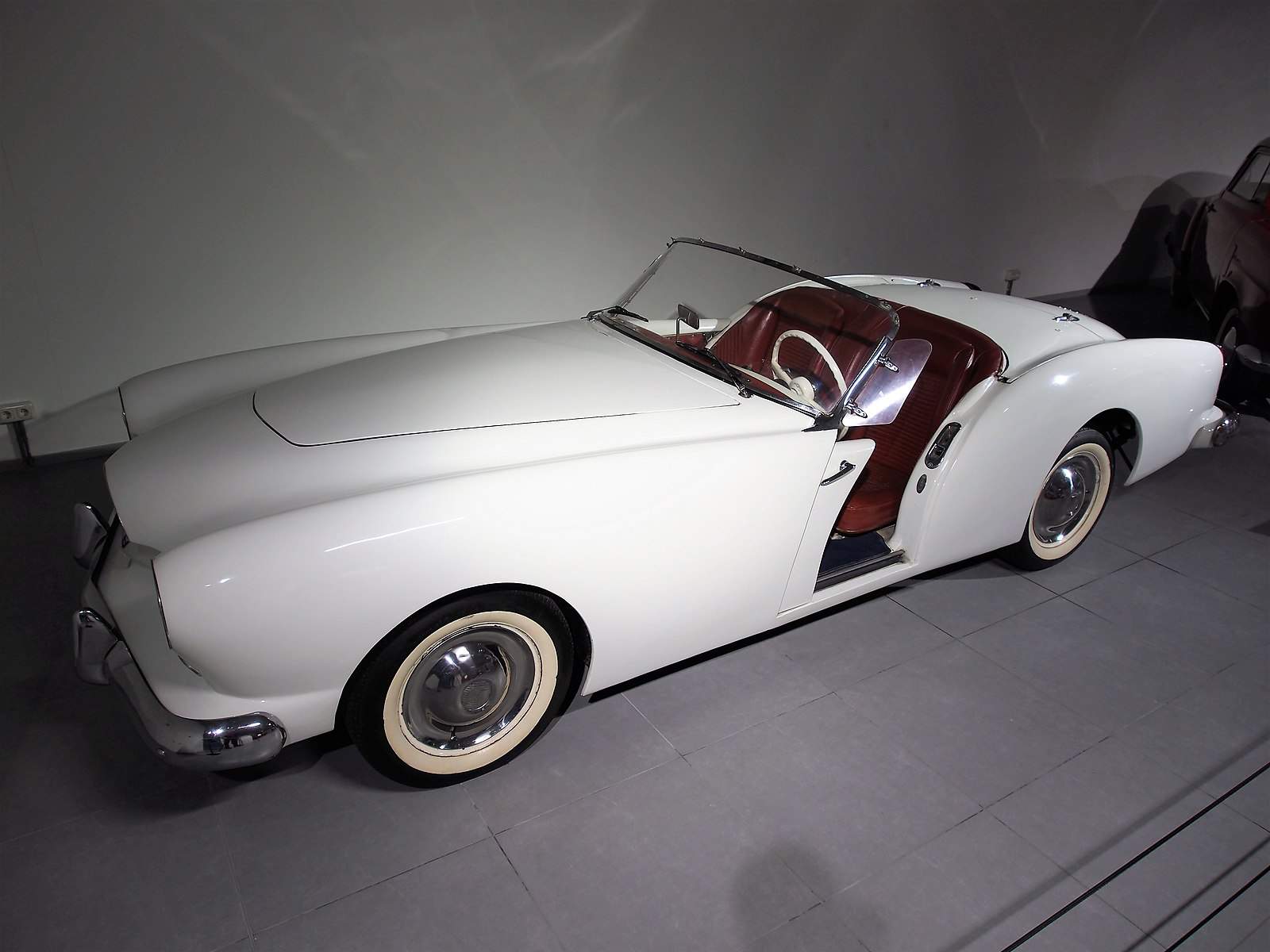
The Kaiser Darrin was the brainchild of renowned designer Howard “Dutch” Darrin. Its most distinctive feature was the pioneering sliding doors, known as pocket doors, which slid into the front fenders, a design element ahead of its time. The sleek roadster design, with its low stance and curved lines, added to the car’s appeal. Under the hood, the Kaiser Darrin featured a 161 cubic-inch six-cylinder engine. Despite its limited production run of 435, the 1954 Kaiser Darrin remains a sought-after classic, prized for its forward-thinking design and its status as an uncommon gem.
Plymouth Belvedere

The Plymouth Belvedere was a classic American automobile positioned as a mid-range option within the Plymouth lineup. The Belvedere’s exterior, characterized by its chrome accents, two-tone paint schemes, and graceful lines, was available in various body styles, including sedan, coupe, and convertible. The Plymouth Belvedere is a cherished classic and a prized collectible.
1955
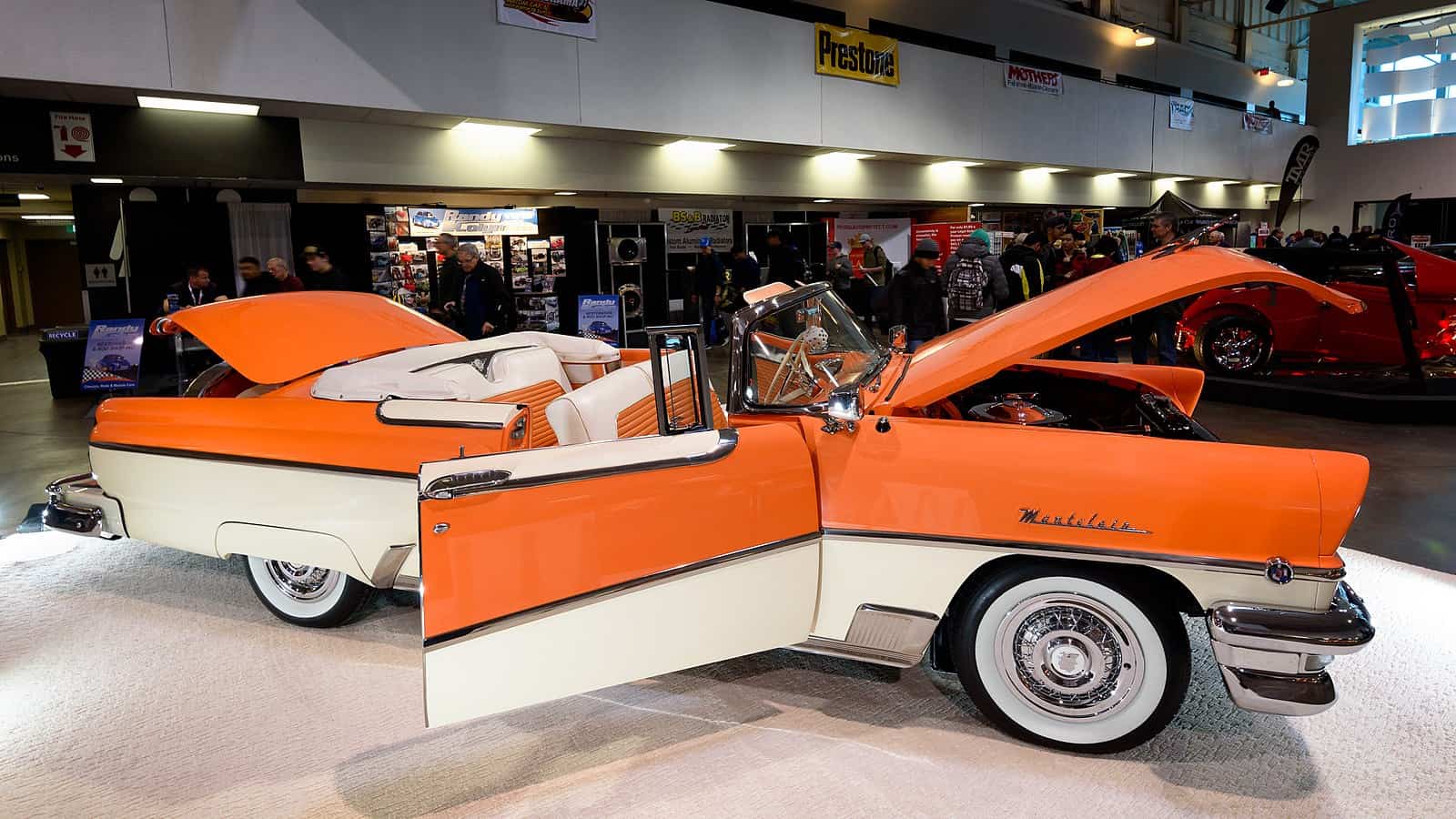
Rosa sat down as the Vietnam War heated up, the first successful polio vaccine, developed by Dr. Jonas Salk, was declared safe and effective. As unbelievable as it sounds, Dr. Salk opted not to patent the vaccine to ensure that it could benefit as many people as possible. The 1955 World Series was another cross-town matchup between the Yankees and the Dodgers, with the Dodgers besting the Yankees in seven to win the championship.
Desoto Fireflite
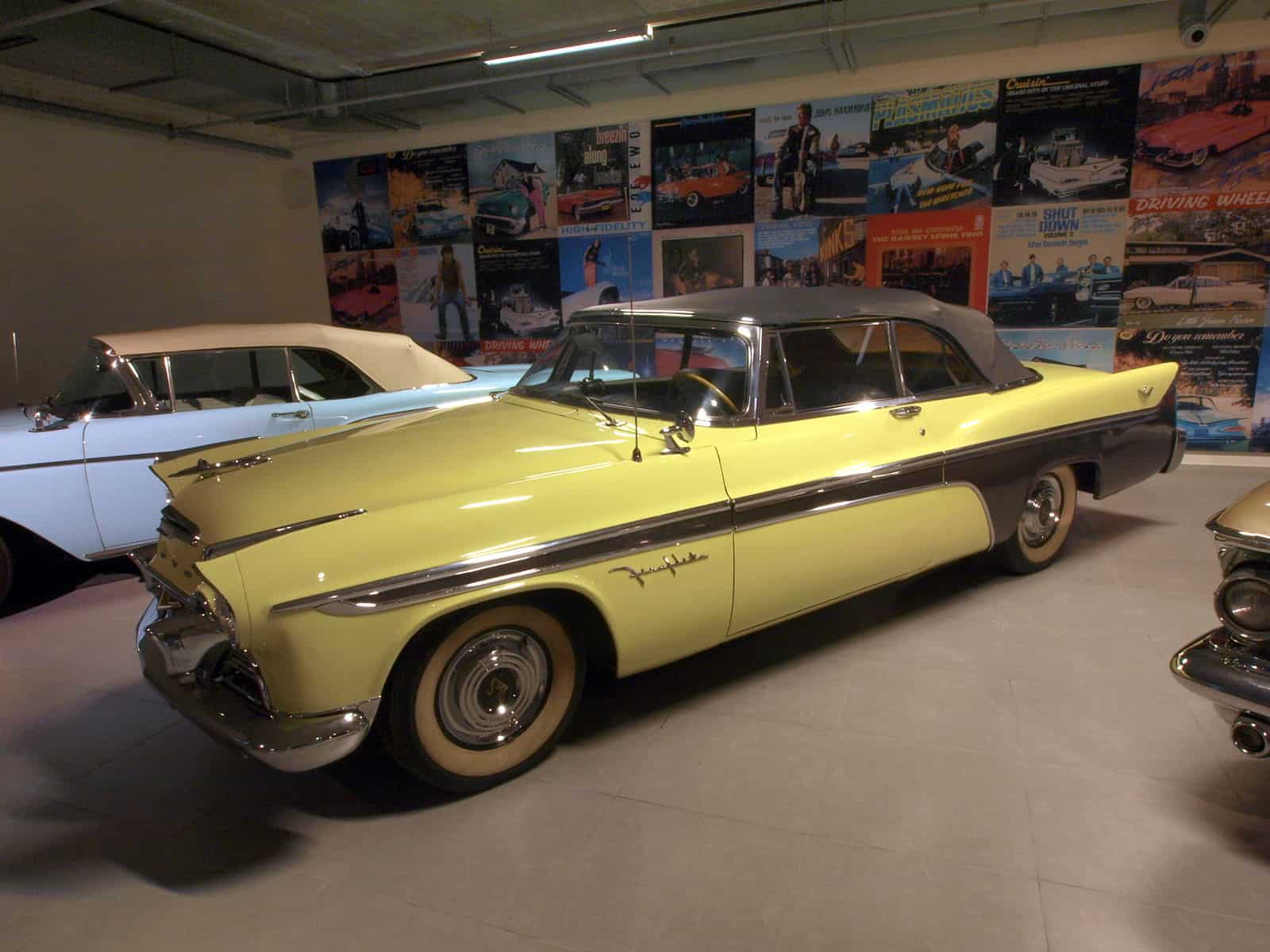
Positioned as a mid-to-upper-tier model within the DeSoto lineup, the Fireflite underwent several design changes and updates during its production run. The Fireflite featured iconic tailfins and chrome detailing, characteristic of the time. The Fireflite was offered in various body styles, including sedans, hardtops, and convertibles. Despite its aesthetic appeal and performance features, DeSoto faced challenges with quality(leaky windows, flaky paint…), and competitive pricing, leading to the discontinuation of the Fireflite and the eventual demise of the DeSoto brand in 1961.
Dodge La Femme
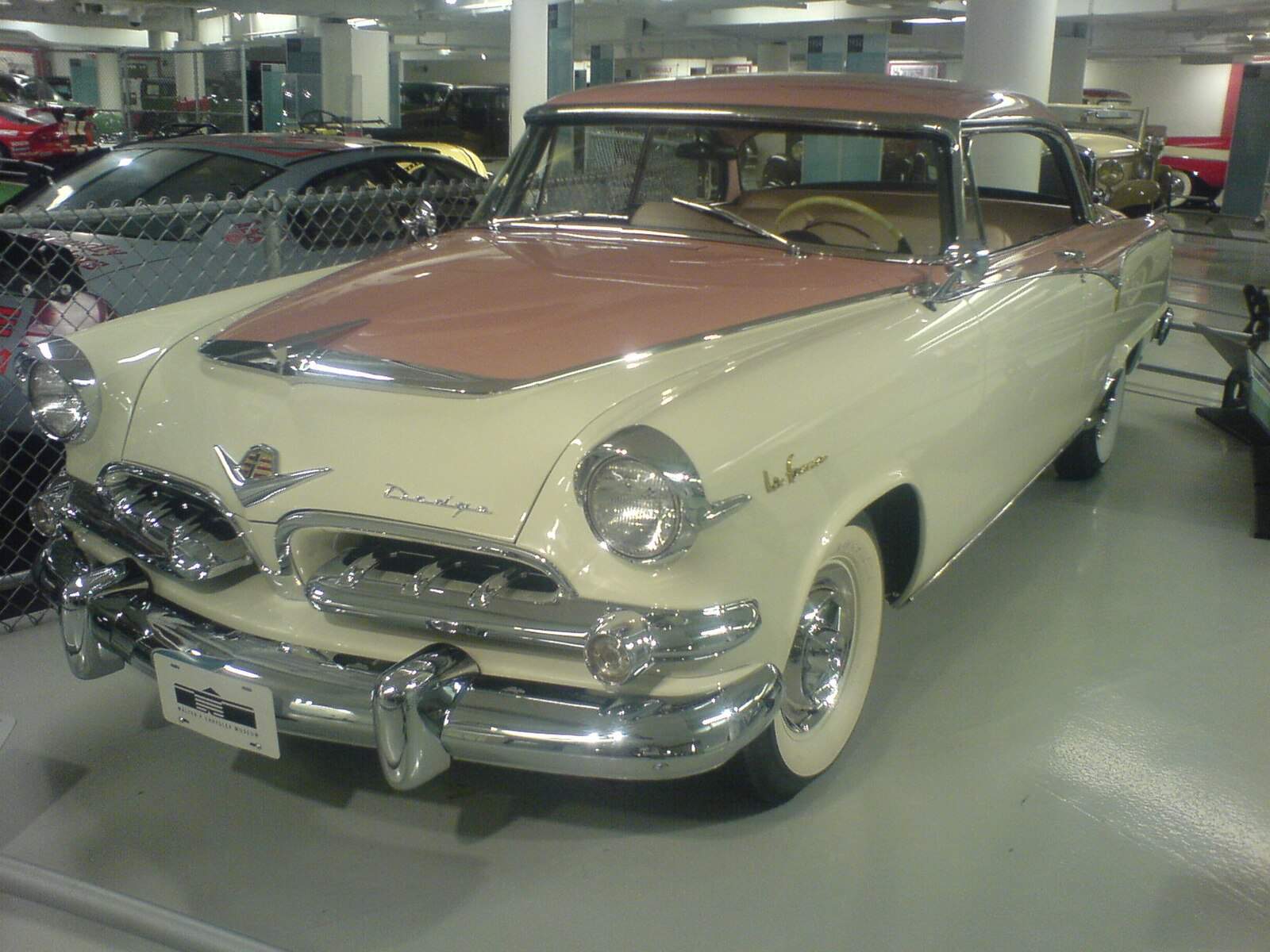
The Dodge La Femme was a short-lived automobile model introduced by Dodge specifically targeted toward the female market. Launched in 1955 and produced for only two model years (1955-1956), the La Femme featured distinctive pink and white color schemes, and a range of specialized accessories including a matching umbrella, raincoat, and makeup case. Despite its efforts to cater to women, the La Femme did not achieve significant commercial success. The car faced criticism for perpetuating gender stereotypes and assumptions about women’s preferences, leading to its discontinuation after just two model years.
Ford Thunderbird, 1st generation
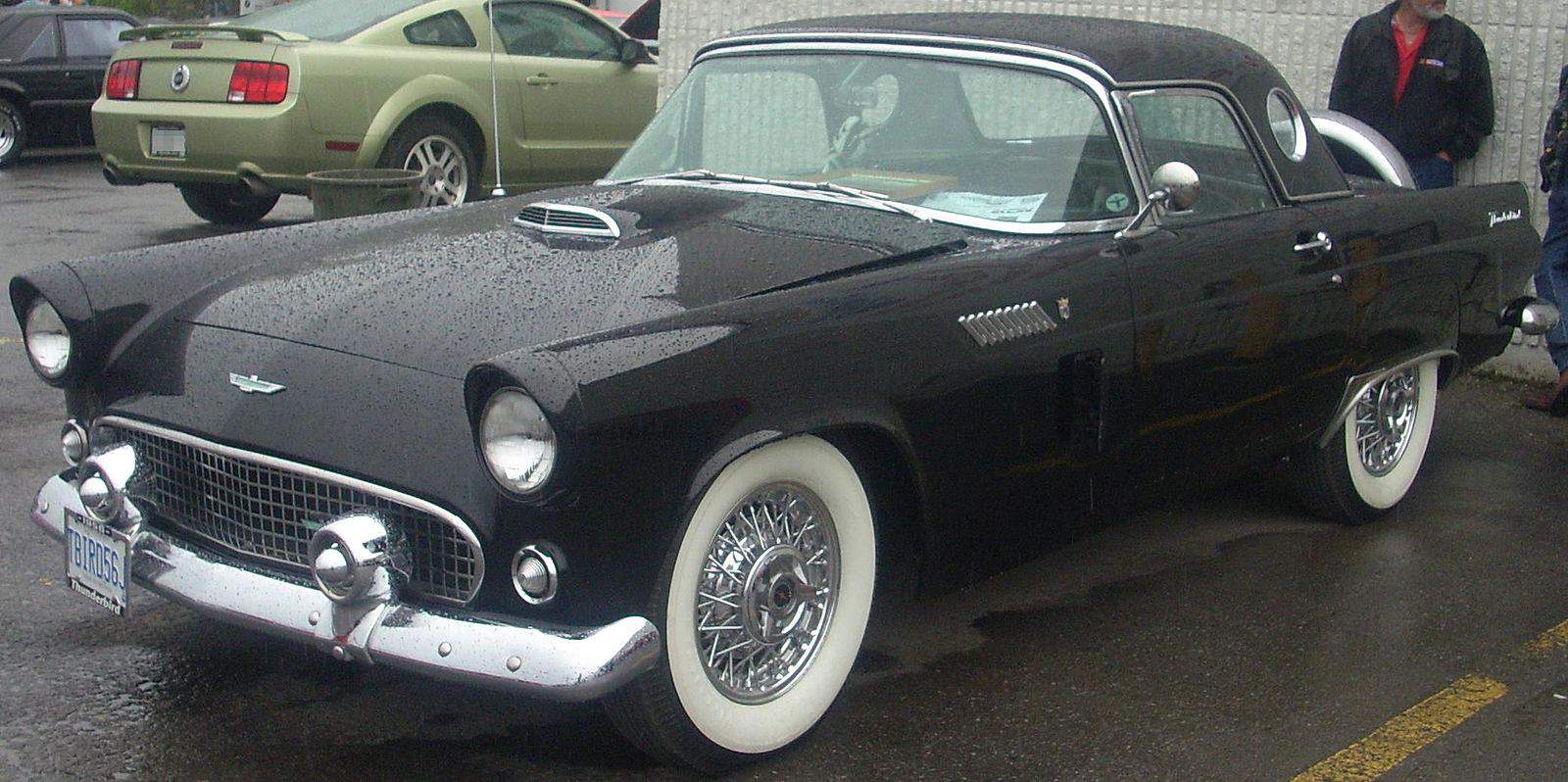
The first generation Ford Thunderbird, introduced in 1955 and produced until 1957, holds a special place in automotive history as a landmark two-seater personal luxury car. With its sleek and stylish design, the Thunderbird was an immediate success, establishing itself as an icon of mid-century automotive design. The success of the first-generation Thunderbird laid the foundation for its enduring legacy as a symbol of American automotive innovation and style.
1956
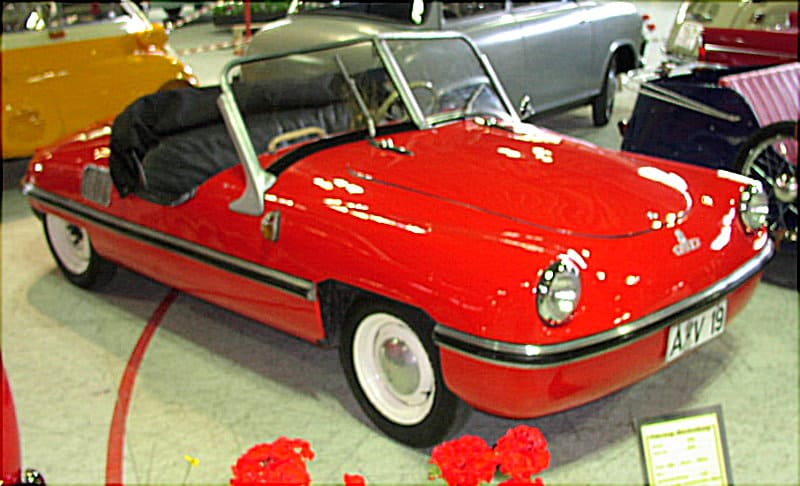
Eisenhower was re-elected POTUS, while across the pond anti-communist uprisings were being quashed in Poland and Hungary. Morocco gained its independence from France, and the Arab-Israel War was in full swing. Back stateside, after a year out of the spotlight, the Yankees were back on top, defeating the Dodgers in 7, with pitcher Don Larsen taking home the MVP award.
Chevy 1957
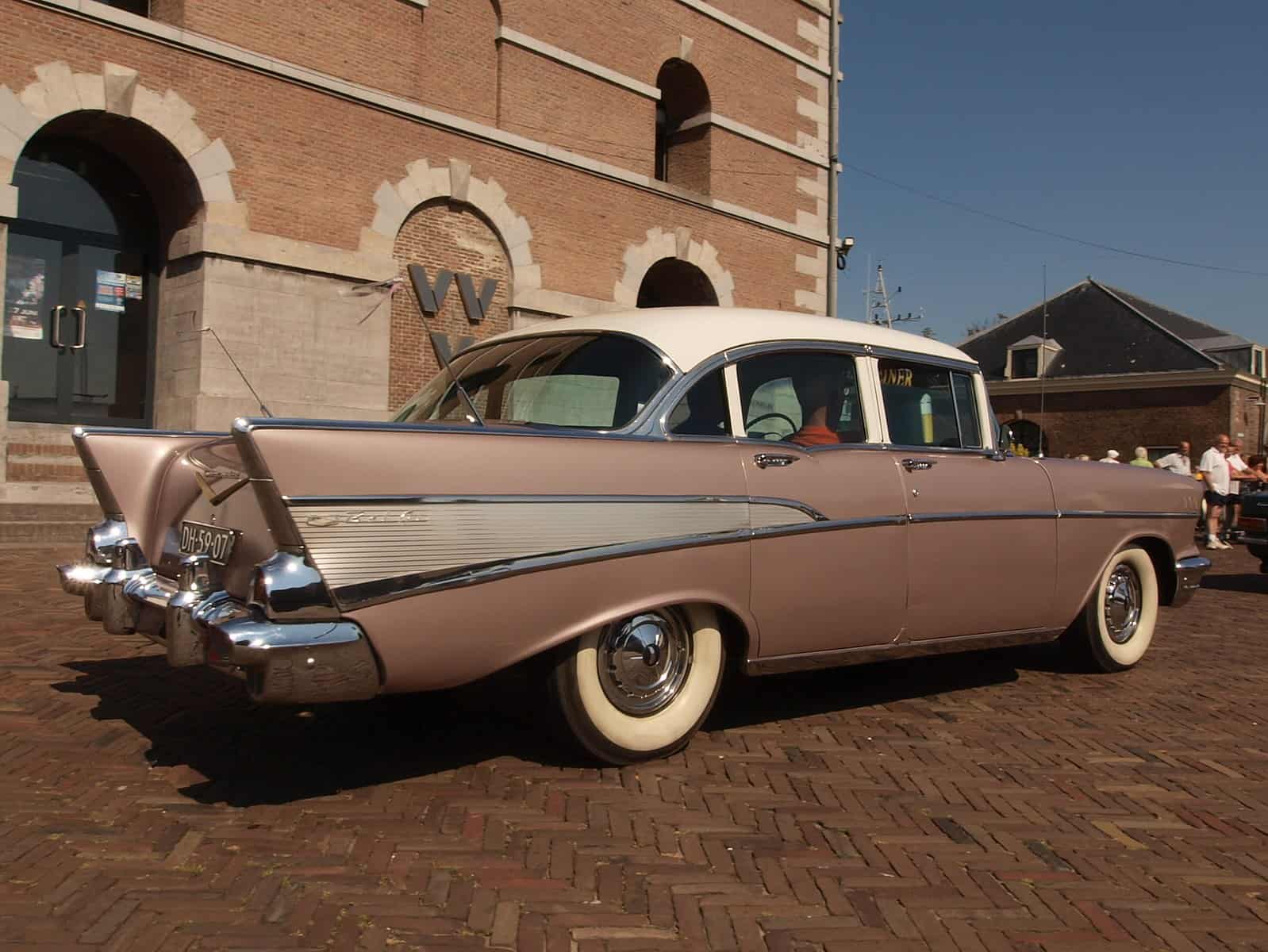
Because models are introduced before entering the market, the ’57 Chevy made its debut in 1956. The 1957 Chevy represents the pinnacle of automotive design from the mid-20th century. Celebrated for its distinctive, bold styling, the ’57 Chevy had a prominent chrome grille, dual headlights, and sweeping tailfins, embodying the exuberance of the latter 1950s.
Continental Mark II
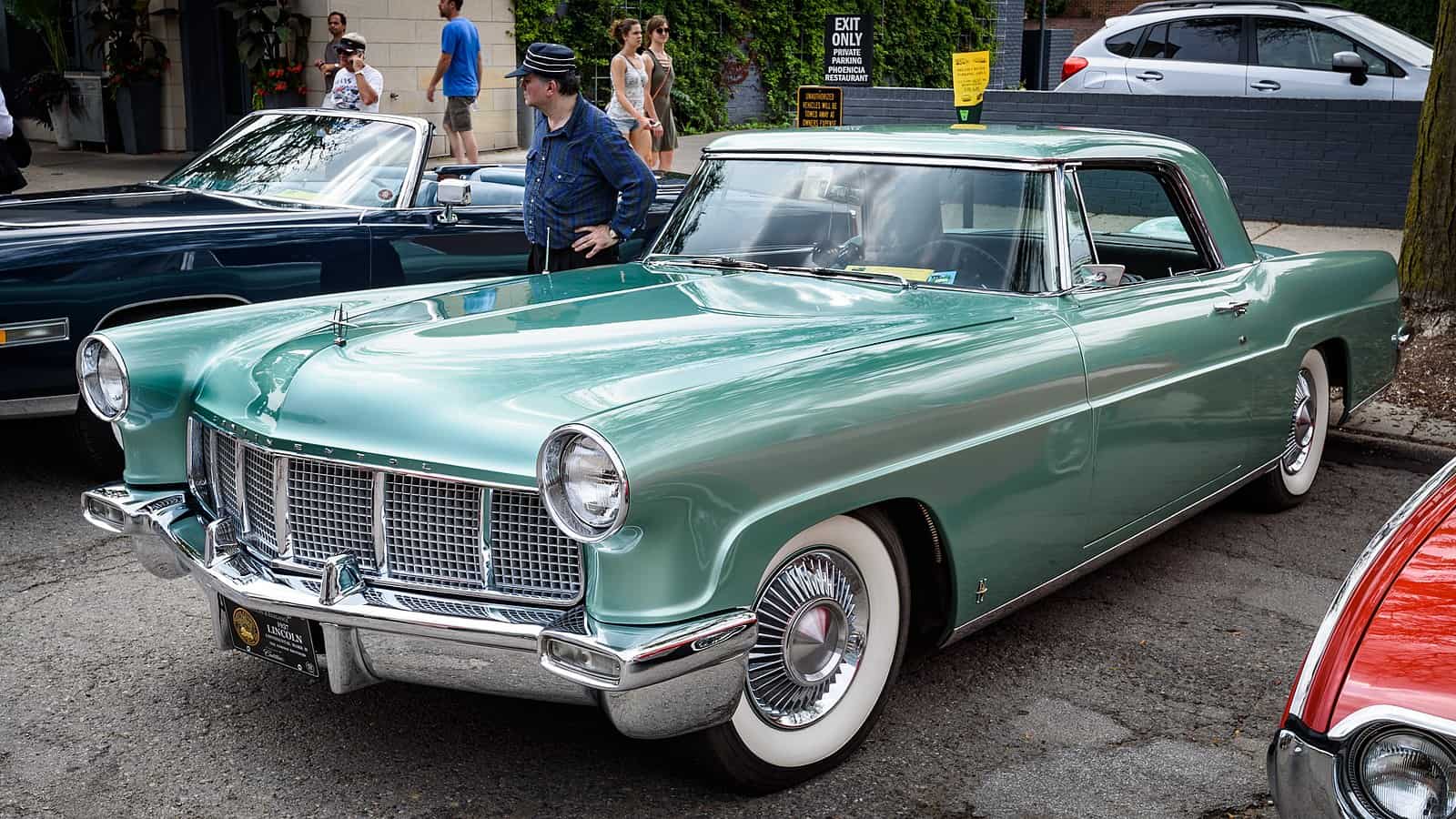
The Continental Mark II, produced by the Continental Division of Ford, was a luxury coupe that graced the automotive scene from 1956 to 1957. The Mark II featured an inset grille, clean lines, and a distinct absence of ornamentation. Under the hood, a powerful 368 cubic inch V8 engine provided a smooth driving experience. Despite its high price tag and limited production numbers, the Continental Mark II was well-received and was only discontinued when Ford merged its Continental and Lincoln divisions.
Oldsmobile Golden Rocket

The Oldsmobile Golden Rocket was a concept car that made its debut at the 1956 General Motors Motorama. The Golden Rocket’s exterior boasted a wraparound windshield, prominent tail fins, and distinctive gold accents. The interior was equally innovative, featuring a unique instrument panel that resembled an aircraft cockpit with a center console-mounted joystick controlling the automatic transmission. While the Oldsmobile Golden Rocket never went into production, it remains a fascinating example of the era’s enthusiasm for innovative concepts.
1957
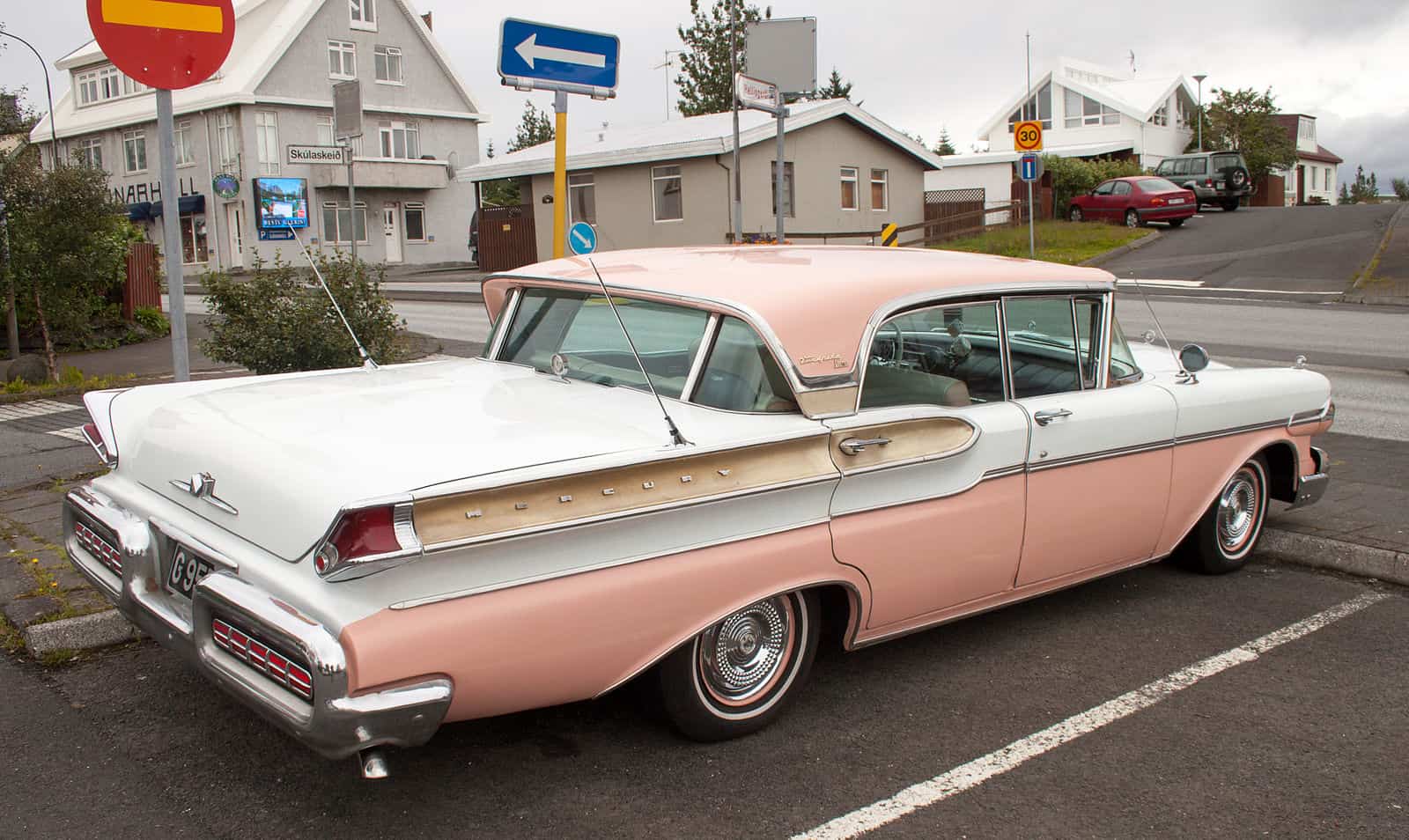
The launch of Sputnik 1 by the Soviet Union marked the dawn of the space age, while the Asian flu raised global health concerns as the virus spread worldwide. The Little Rock Nine’s attempts to integrate a Central High highlighted ongoing struggles for civil rights in the U.S., while Ghana’s declaration of independence from British rule marked a significant moment in Africa’s decolonization. The Milwaukee Brewers beat the New York Yankees in Yankee Stadium, with MVP Lew Burdette on the mound, to become World Series champs for the first and only time in the franchise’s history.
Ford Fairlane 500 Skyliner
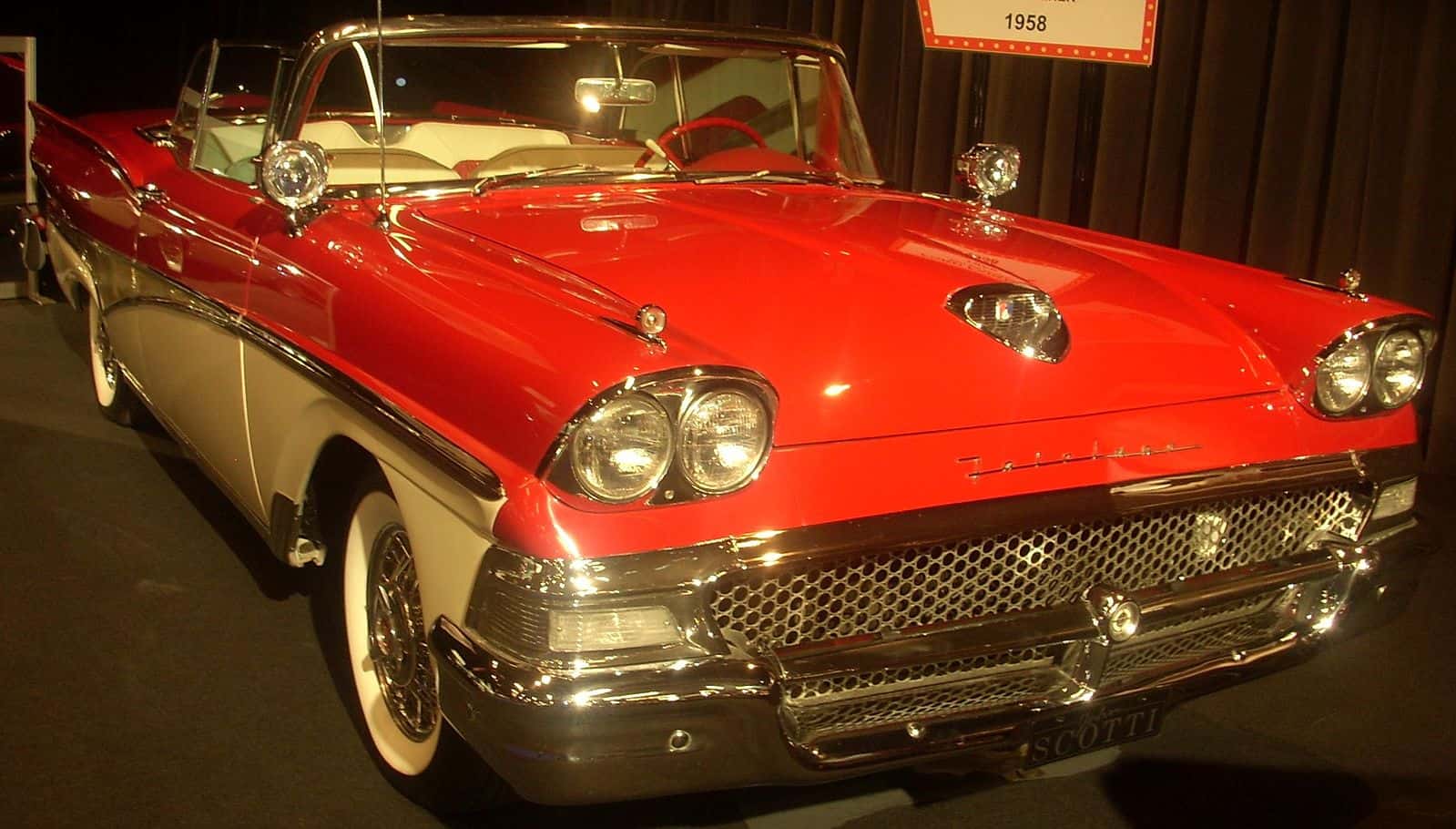
The Ford Fairlane 500 Skyliner was the world’s first mass-produced convertible. With a fully retractable roof, the Skyliner combined the appeal of an open-top experience with the practicality and security of a hardtop. Controlled by a complex mechanism of motors and switches, the roof folded neatly into the trunk, transforming the car from a sleek coupe to an open convertible in under a minute. The Fairlane 500 Skyliner boasted tailfins and chrome accents, with a powerful V8 engine, providing both style and performance.
Škoda 1100 OHC

Introduced in 1957, the Czechoslovakia-made Škoda 1100 OHC (OverHead Cam) was a lightweight sports car designed for racing. The car was powered by a 1.1-liter, four-cylinder engine featuring dual overhead camshafts. With an output of 92 horsepower, the 1100 OHC was a competitor on the racing circuit. Though only two were produced, the Škoda 1100 OHC reflects Škoda’s commitment to pushing the boundaries of automotive engineering and design.
Lotus Elite
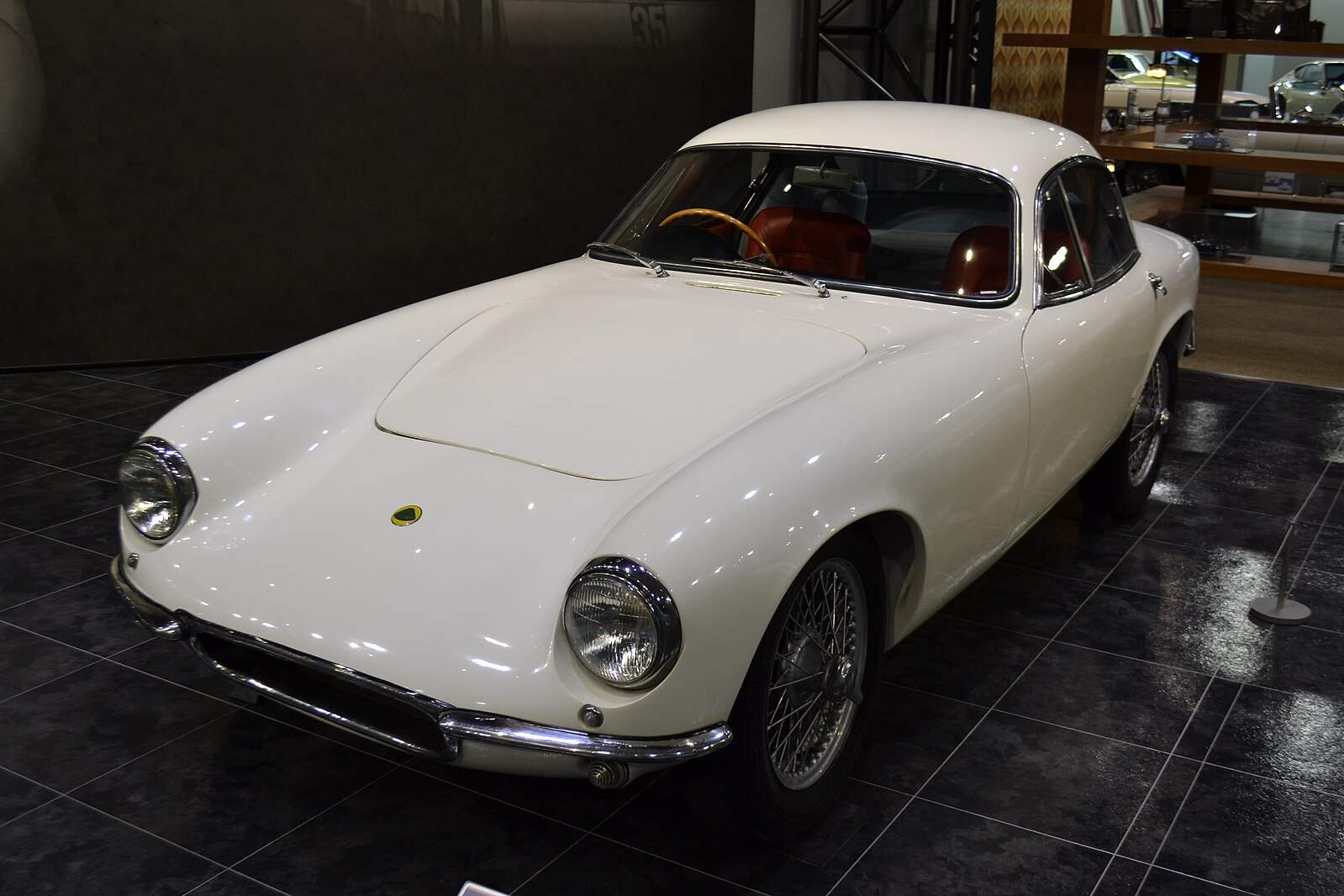
The Lotus Elite featured a fiberglass body with monocoque construction, eliminating the need for a conventional chassis. This design contributed to a lower overall weight and enhanced performance. The Elite also boasted an independent suspension system, disc brakes, and a 1.2-liter Coventry Climax engine. Despite its small size, the Elite showcased remarkable agility and handling, establishing Lotus as a trailblazer in the sports car realm.
1958
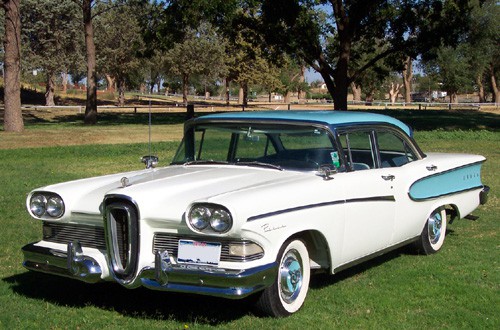
The U.S. entered the space race with the launch of the satellite Explorer 1, on January 31, 1958, after the National Aeronautics and Space Administration (NASA) was established in the United States that July. The first transatlantic passenger jet flew across the Ocean in October 1958 when a British Overseas Airways Corporation (BOAC) de Havilland Comet 4 aircraft flew from London to New York. And, the Yankees once again emerged victorious, winning their 18th World Series Championship, beating the Milwaukee Braves, who would move to Atlanta six years later.
Chevy Biscayne
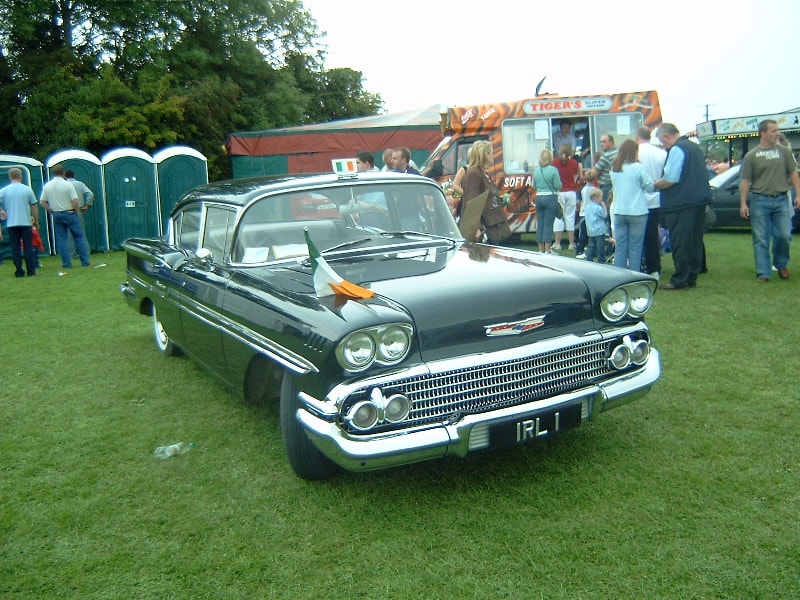
Initially positioned as the entry-level model in the Chevrolet lineup, the Biscayne underwent several iterations over the years. The Biscayne was offered in various body styles, including sedans and station wagons, making it a versatile choice for families. Though the Biscayne may not have had the flashy appeal of some of the other models on our list, its affordability and reliability contributed to its popularity, particularly among those seeking a no-nonsense, dependable ride.
Ford Thunderbird 2nd generation
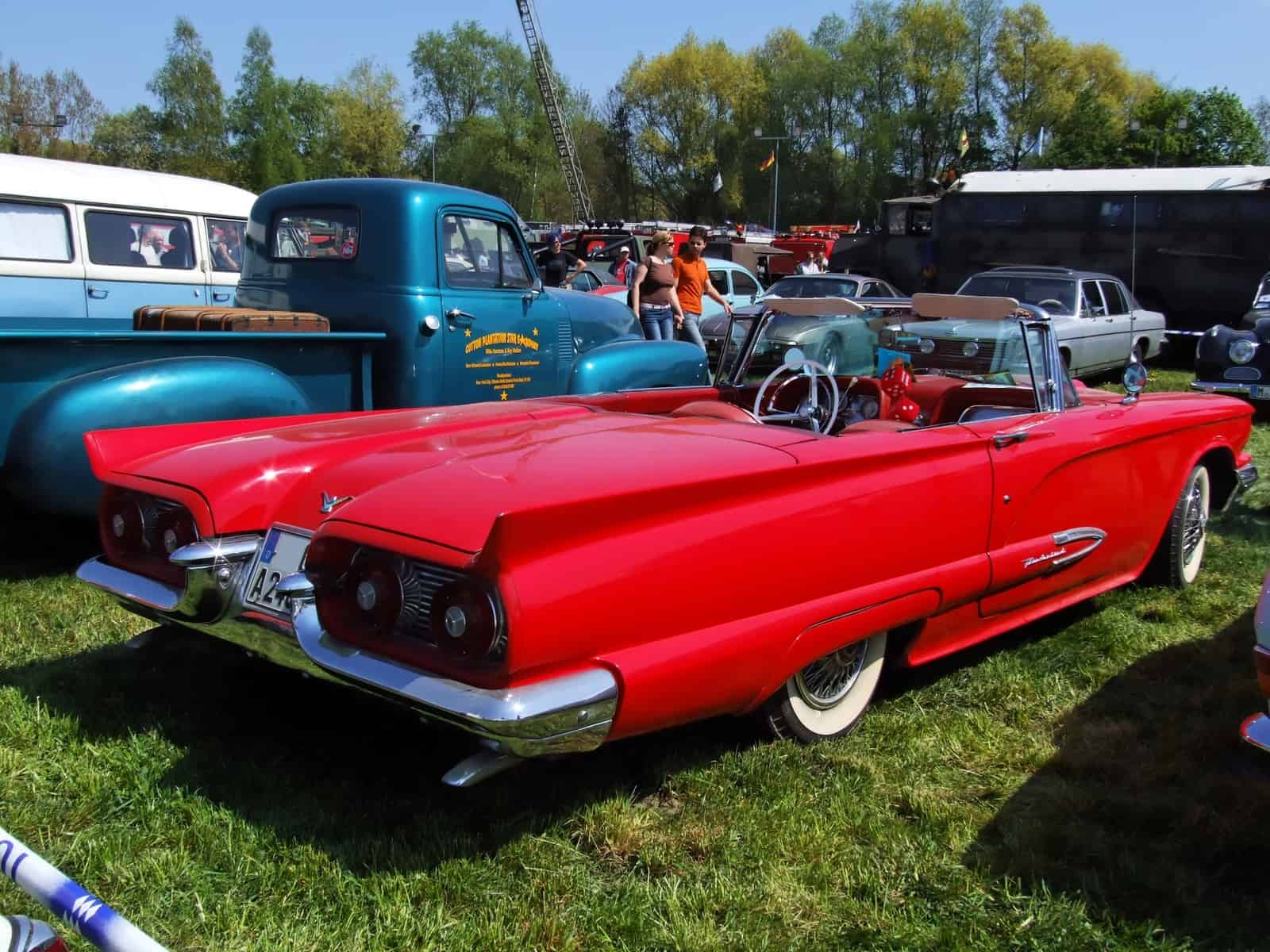
The second-generation Ford Thunderbird marked a significant departure from the original two-seater roadster. Introduced as a response to the growing demand for larger, more luxurious cars, the 1958 Thunderbird evolved into a four-seat, stylish personal luxury car. Iconic design elements such as quad headlights, a distinctive grille, and prominent tailfins embraced the aesthetic trends of the late 1950s. The 1958 model was sometimes called the Square Bird, the 2nd generation Thunderbird successfully positioned itself in the expanding market for upscale and comfortable automobiles, while retaining the essence of the Thunderbird legacy.
TVR Grantura
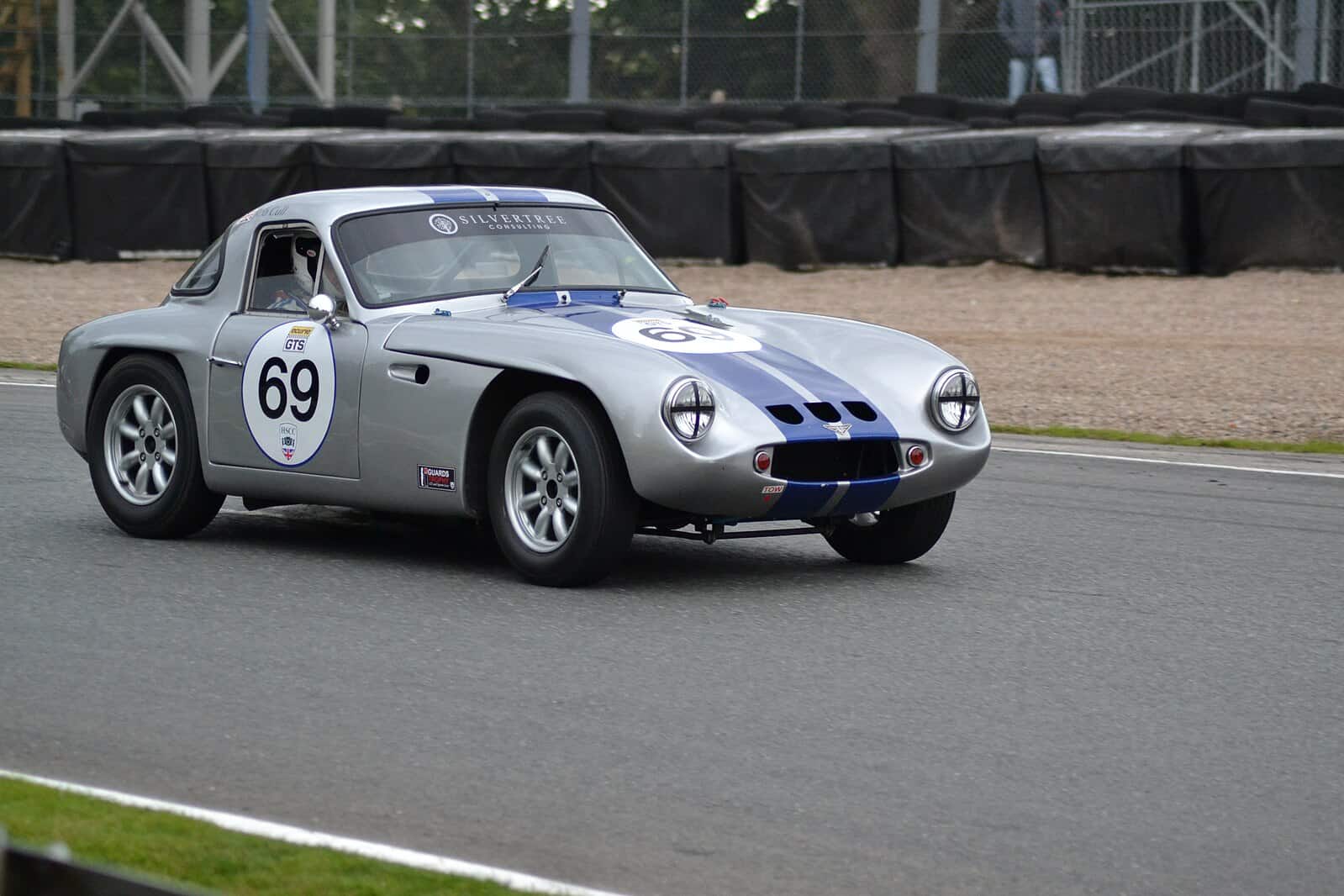
The Grantura, produced by the British automaker TVR, was a lightweight, compact sports car. It had a fiberglass body over a tubular steel chassis. This construction contributed to the Grantura’s agility and performance. The TVR Grantura embodied the spirit of British sports cars of its era, showcasing a balance of performance and distinctive design that contributed to TVR’s reputation in the automotive world.
1959
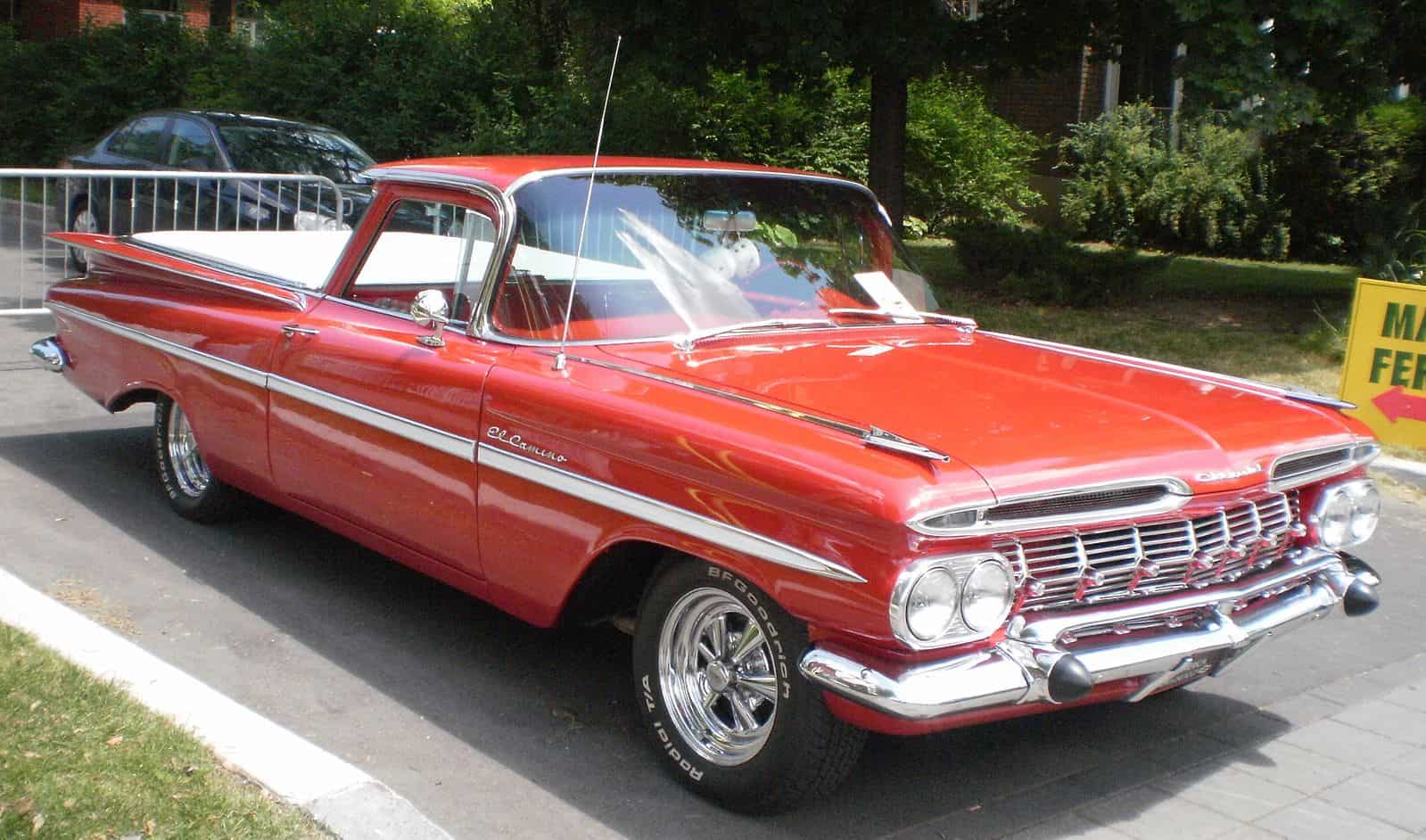
The U.S. added two stars to its flag with the additions of Alaska and Hawaii, Fidel Castro was trending in Cuba, and The kitchen debate between Richard Nixon and Nikita Khrushchev heightened Cold War tensions. Barbie (the Doll) made her debut at the New York Toy Fair, and after moving from Brooklyn to Los Angeles, the Dodgers beat the Chicago White Sox in six to clinch the World Series Championship.
Buick Le Sabre
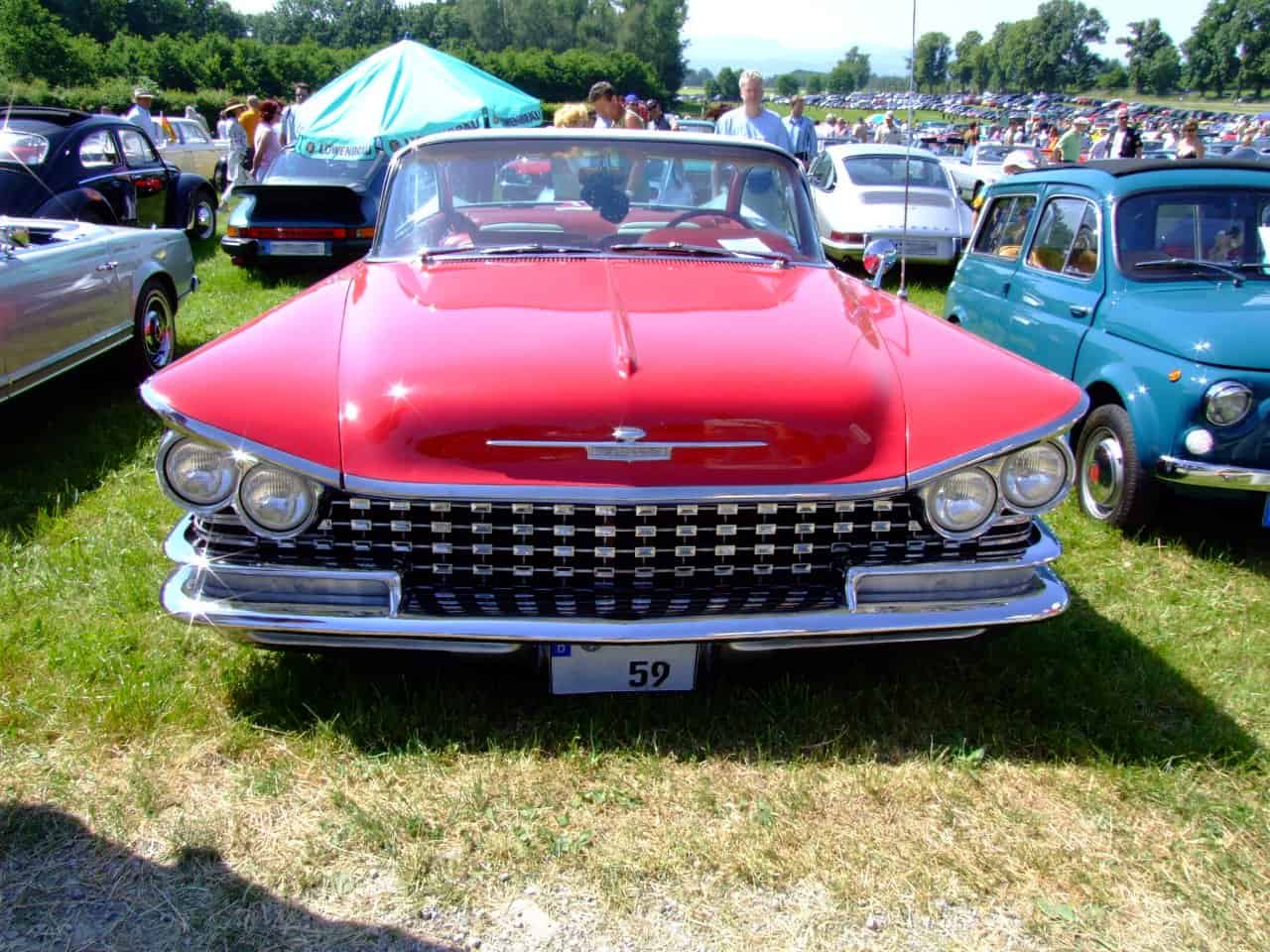
The Buick LeSabre reflected the design trends of the late 50s with its distinctive tailfins, chrome detailing, and spacious, comfortable interior. Positioned as a mid-range option within the Buick lineup, the LeSabre was well-received for its combination of style, performance, and affordability. Renowned for its smooth ride and V8 engine options, the Buick LeSabre remains a nostalgic symbol of mid-century American motoring.
Goggomobil Dart
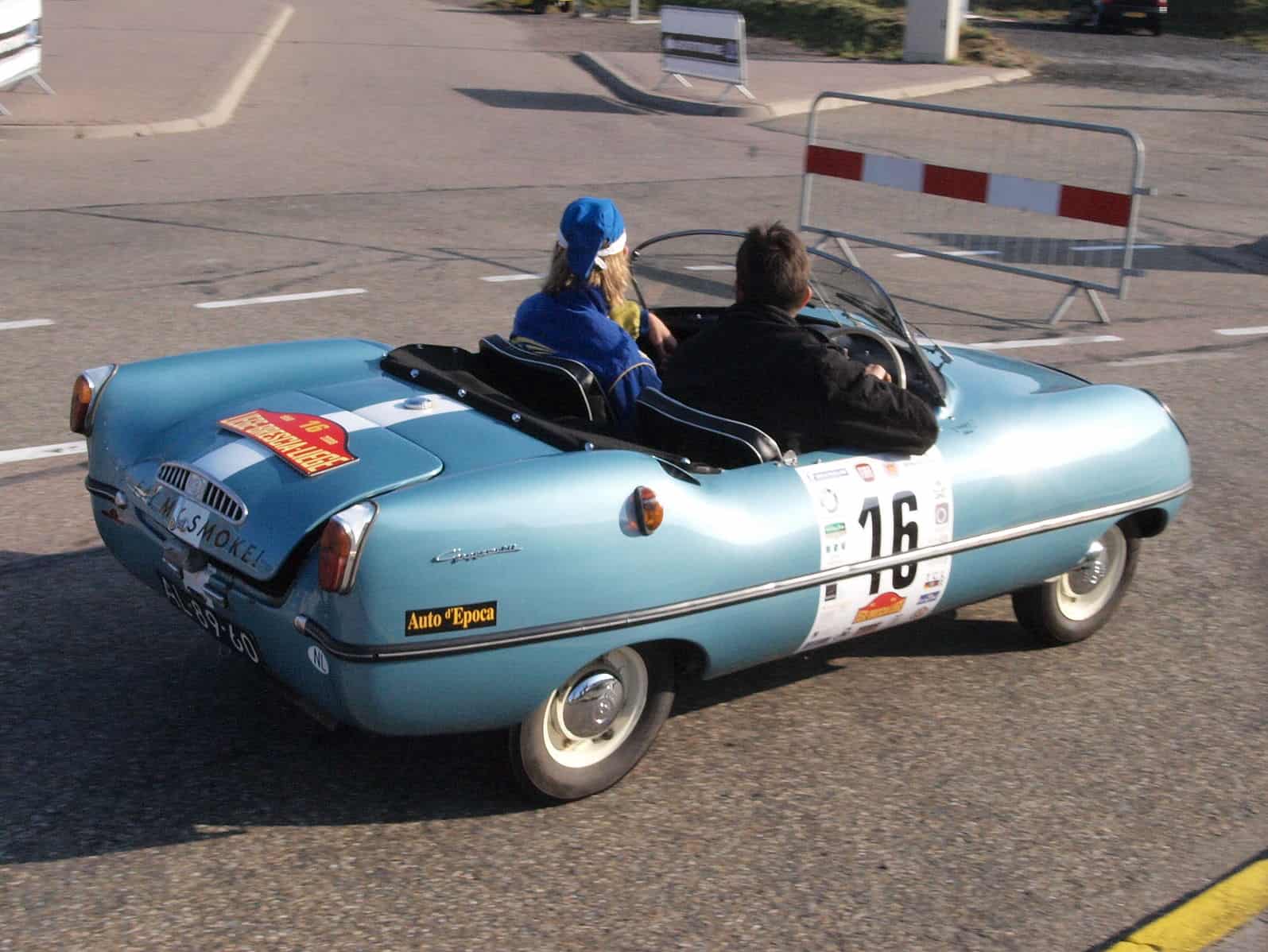
The Goggomobil Dart, a microcar produced by Buckle Motors of Sydney Australia, was a two-seater sports car. With its bubble-like canopy and diminutive size, the Dart embraced the microcar trend. While its modest engine power was not designed for high-performance driving, the Dart became a popular choice for urban commuting due to its fuel efficiency and quirky charm. Although production was limited to 700 units, the Goggomobil Dart’s place as a quirky and innovative microcar has stood the test of time.
Triumph Italia 2000 Coupé
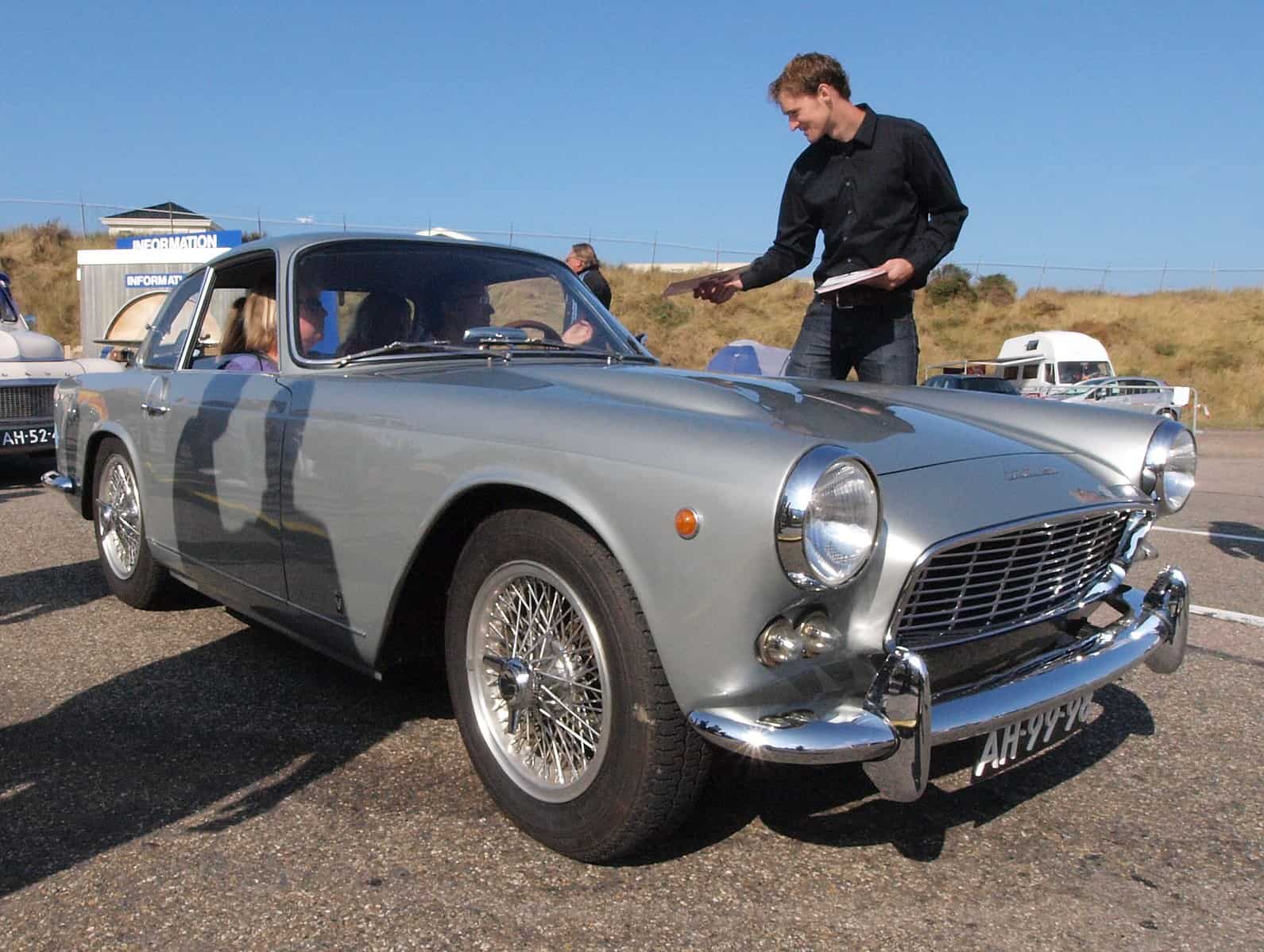
The Triumph Italia 2000 Coupe was a captivating blend of British engineering and Italian design flair. Born from a collaboration between Triumph and the Italian coachbuilder Michelotti. Built on the chassis of the Triumph TR3, this limited-production (330 units) sports car’s graceful curves, elegant grille, and intricate detailing make it a sought-after classic.
100 Million Americans Are Missing This Crucial Retirement Tool
The thought of burdening your family with a financial disaster is most Americans’ nightmare. However, recent studies show that over 100 million Americans still don’t have proper life insurance in the event they pass away.
Life insurance can bring peace of mind – ensuring your loved ones are safeguarded against unforeseen expenses and debts. With premiums often lower than expected and a variety of plans tailored to different life stages and health conditions, securing a policy is more accessible than ever.
A quick, no-obligation quote can provide valuable insight into what’s available and what might best suit your family’s needs. Life insurance is a simple step you can take today to help secure peace of mind for your loved ones tomorrow.
Click here to learn how to get a quote in just a few minutes.
Thank you for reading! Have some feedback for us?
Contact the 24/7 Wall St. editorial team.

